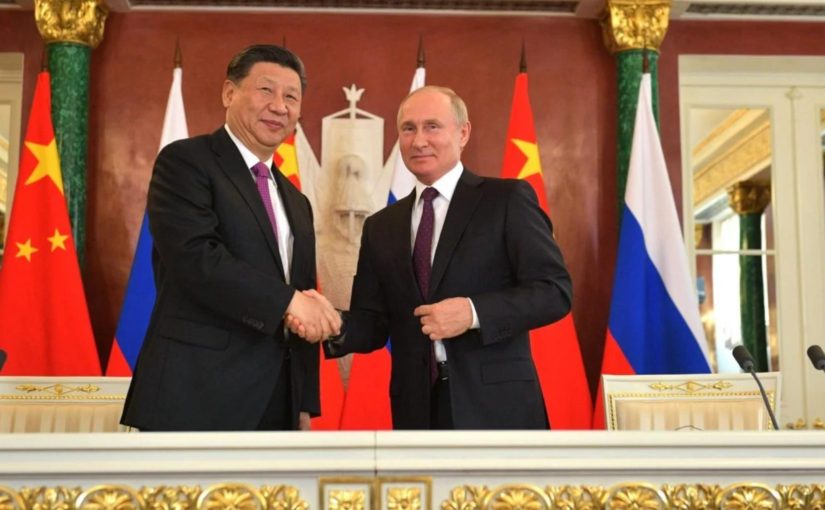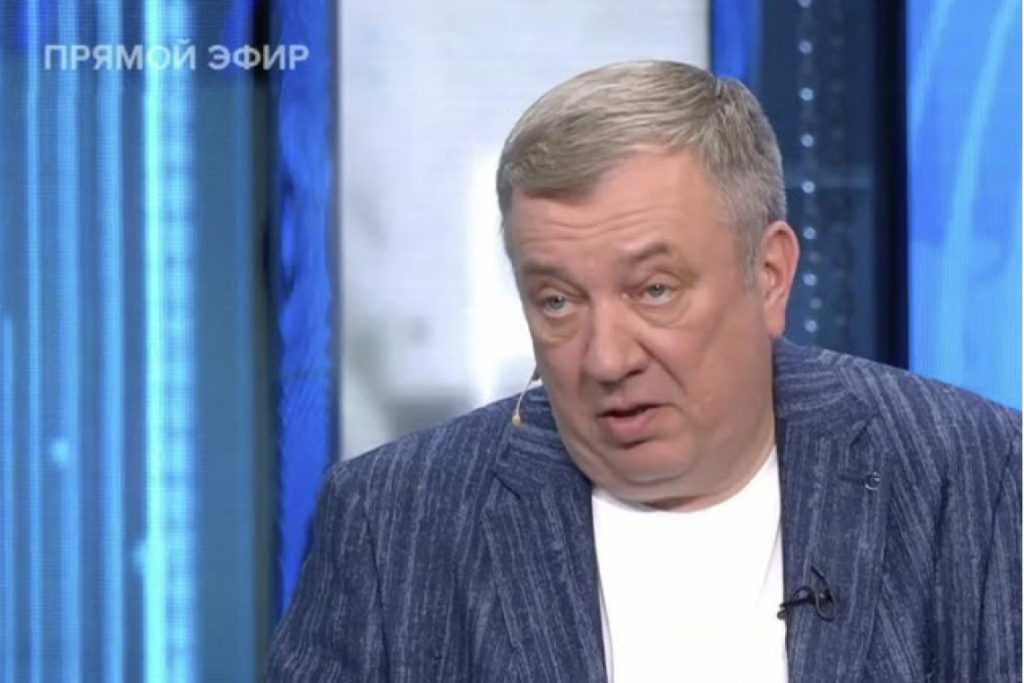So much change.
The United States is disintegrating before our eyes. Society has collapsed, the government is frail, ineffective, bloated, and acting insanely.
Internal domestic conflict is in process as it is trying to “right the sinking ship” somewhat.
Roe's demise marks new phase in state-by-state battle over abortion...
The Court giveth and the Court taketh away!
Ruling Highlights Diverging Paths of Roberts, Alito...
Critics fear Thomas 'extreme' position on contraception...
LGBTQ community braces for rollback of rights...
Next big fight looms over pills...
Biden confronts bombshell that could define presidency...
Condemns But Has Few Powers...
Trump Publicly Credits God -- Privately Says 'Bad'...
Kavanaugh Gave Assurances. Collins Says He 'Misled' Her...
World leaders call decision horrific...
Corporations scramble to determine what will cover...
Prosecutors vow not to go after women seeking procedures...
However, it is ultimately going to fail. Simply because the United States is in such dept that if you sell everything, in the United States… EVERYTHING, the people would be still in trillions of dollars in debt.
Historically, the only solution is to enslave the civilian survivors and have them work off their debts as serf / slaves to a conquering power.
That’s clear as day.
American “allies” and proxy militarized forces are all weak, yet still believing in their unwavering power (from God).
Meanwhile, there is a massive ray of hope; BRICS has organized, planned, and implemented a structure that is being built upon the collapsing embers and rubble of the collapsing West.
It is a superior structure.
It is a long lasting one, and it is and will continue to be, a fair one.
It’s an exciting time for those who are aware.
Yet, this period is fraught with peril.
"The US has at least two Soviet era nuclear weapons recovered by the CIA from submarine K-129 in "Operation Azorian" in 1974."
The implication is a nuclear false flag. Big yikes.
…
Let’s go through today’s article posting…
Chicken Fricassee – quick French Chicken Stew
Quick, simple and delicious. What’s not to love?
CSIS
The CSIS, funded by the American Military-Industrial Complex, advises the United States government on what to do. Obviously, that’s one (major) reason why nothing goes right.
Here’s and example from the “brilliant advice” from CSIS:
From Seth Jones, June 2022. Senior Vice President; Harold Brown Chair; and Director, International Security Program. Subject: Russia’s Ill-Fated Invasion of Ukraine
Lessons in Modern Warfare Russia has failed to achieve most of its objectives in Ukraine because of poor military planning, significant logistical problems, low combat readiness, and other deficiencies, which undermined Russian military effectiveness. These and other challenges—including Ukrainian military efforts and Western aid—severely impacted Russian air, ground, cyber, and maritime operations. Russia’s failures will force the Russian military to fundamentally rethink its training practices, organizational structure, culture, logistics, recruitment and retention policies, and planning efforts. Nevertheless, Russia is still attempting a de facto annexation of parts of eastern and southern Ukraine that it controls. here
Senior diplomat says relations with Japan at important juncture
China-Japan relations involve a number of old and new problems, a senior Chinese diplomat said on Tuesday, adding that the difficulties and challenges faced by bilateral ties should not be ignored.
Yang Jiechi, a member of the Political Bureau of the Communist Party of China Central Committee and director of the Office of the Central Commission for Foreign Affairs, made the remark in a phone conversation with Takeo Akiba, secretary-general of Japan’s National Security Secretariat.
Noting that China-Japan relations have reached an important point in history, with this year marking the 50th anniversary of the normalization of diplomatic ties between the two countries, Yang said China and Japan must stay on the right track, adhere to win-win cooperation, take a long-term perspective and enhance mutual trust on security.
Stable ties
He called on Tokyo to work with Beijing to ensure stable, healthy and resilient China-Japan relations over the next 50 years and jointly safeguard regional peace and prosperity.
According to a statement on the Foreign Ministry’s website, Akiba told Wang that Japan stands ready to deepen cooperation with China, and appropriately handle differences and strengthen communications on sensitive bilateral issues and international hot spot issues in order to jointly build a constructive and stable Japan-China relationship.
Yang also elaborated on China’s principled positions on the Taiwan question and issues related to Hong Kong and the Diaoyu Islands, among others, during the meeting.
Experts said that the meeting came at a time when Japan has been closely following the United States’ “Indo-Pacific” strategy and is actively engaged in containing China and stirring up confrontation in the Asia-Pacific region.
By doing so, Tokyo is also attempting to regain its status in Asia. However, such a practice is not conducive to regional peace, stability and the healthy development of China-Japan relations, and Japan will inevitably have to pay the price for this, they added.
Last month, as US President Joe Biden made his first trip to Asia, Tokyo hosted the leaders’ meeting of the Quadrilateral Security Dialogue, or Quad, an anti-China grouping consisting of the US, Japan, India and Australia. Japan also endorsed the Indo-Pacific Economic Framework launched by Biden in Tokyo.
Irresponsible remarks
During Biden’s visit, Japan and the US made irresponsible remarks and groundless accusations on a series of issues related to China’s domestic affairs, including on the Taiwan question.
Wang Junsheng, a researcher of East Asian studies at the Chinese Academy of Social Sciences, said that Japan is joining with the US to counter China as Tokyo is Washington’s close ally, and also because it misjudges China’s development.
“Japan is unwilling to see a rising China because it mistakenly assumes that China’s development will harm its own interests,” Wang said. “However, the fact is that as close neighbors, both China and Japan will benefit from their good relationship in various areas including trade and the economy, regional cooperation and tackling climate change.”
Xiang Haoyu, a distinguished research fellow at the China Institute of International Studies, said in an article in Global Times that hyping up or creating so-called external threats for specific political purposes will not make Japan great again or bring it absolute security.
Instead, it will only get Japan into greater security dilemmas, Xiang said.
Artist Creates Witty Single-Panel Comics Depicting Odd And Absurd Situations In A Slightly Different Everyday Life
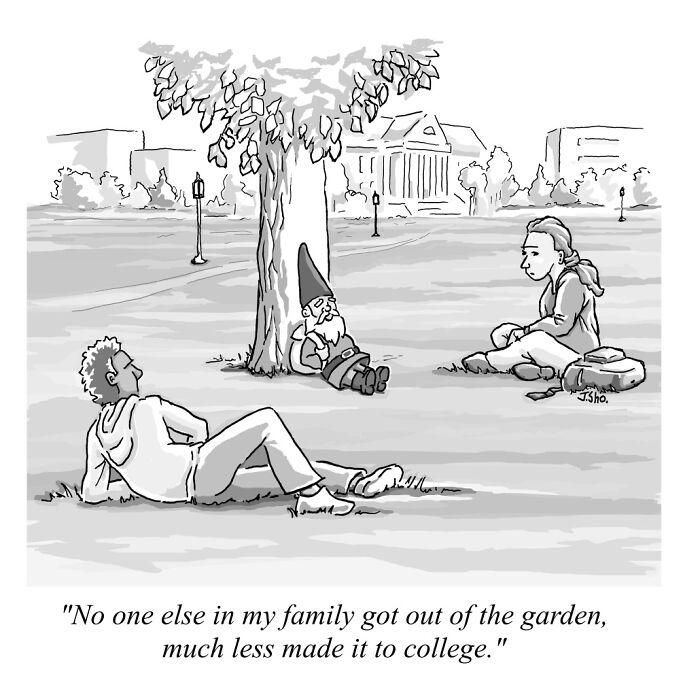
Let us introduce you to Jim Shoenbill, an illustrator who is on a mission to brighten people’s days with positive humor. He creates witty single-panel comics depicting weird and absurd situations in a slightly different everyday life.
In this universe made by Jim, a deer can be a stand-up comedian, Jesus is no longer a miracle worker, but an optician, beverages can talk and more. As the artist described himself, he just channels his distractions and odd thoughts into funny cartoons “to make the world a better place”.
Jim’s illustrations and writing have appeared in magazines such as The Oldie, Alta, Women’s World, American Legion Magazine and more. So, without further ado, scroll down to immerse yourself in the sea of humor and puns.

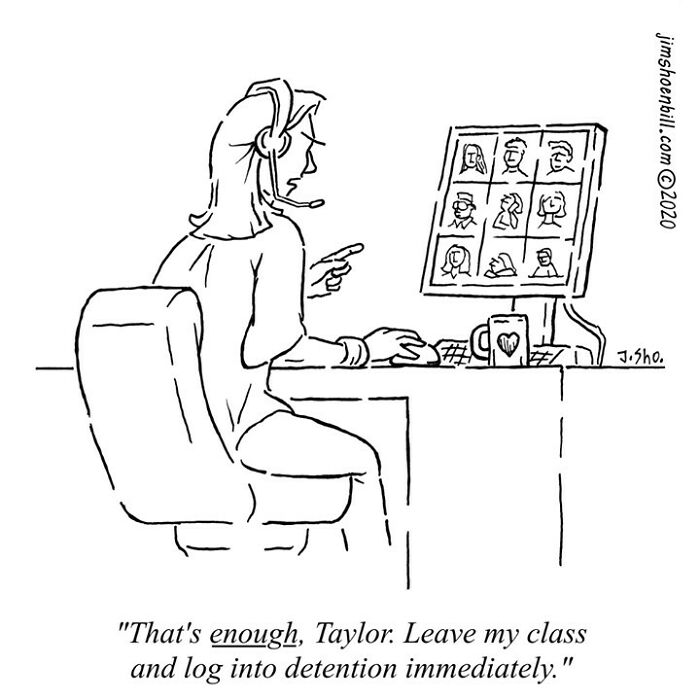





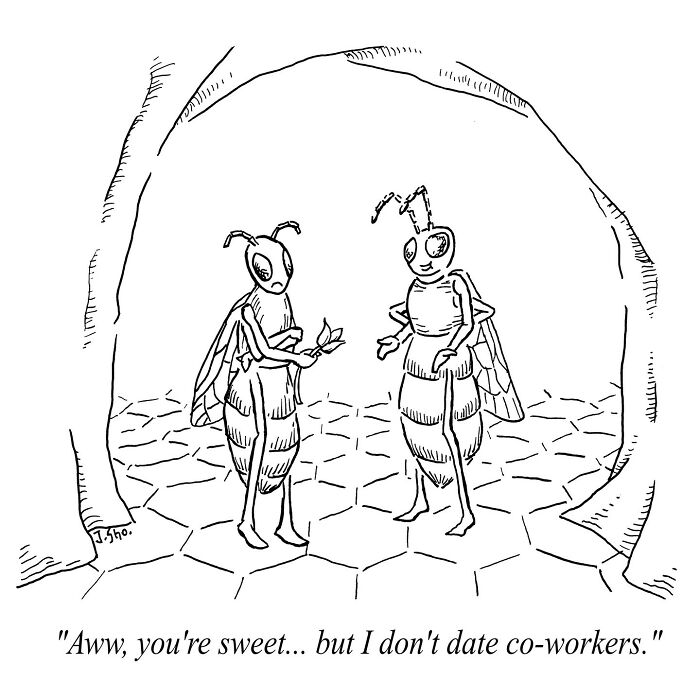

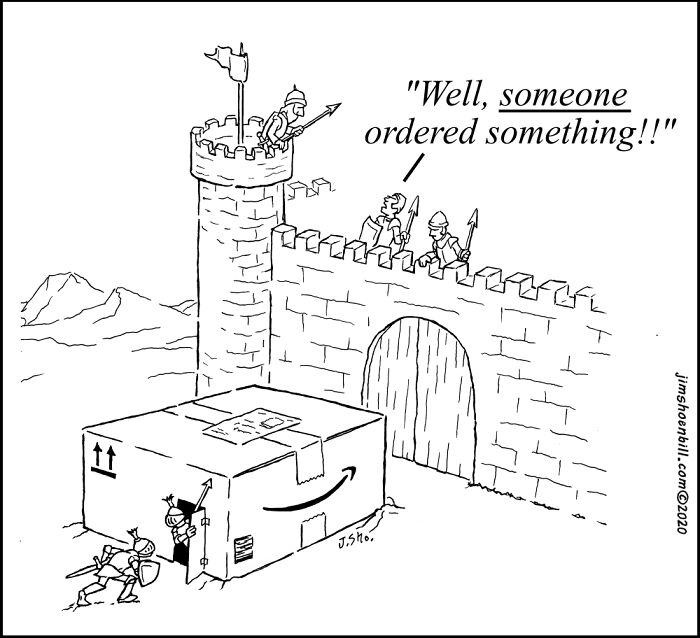



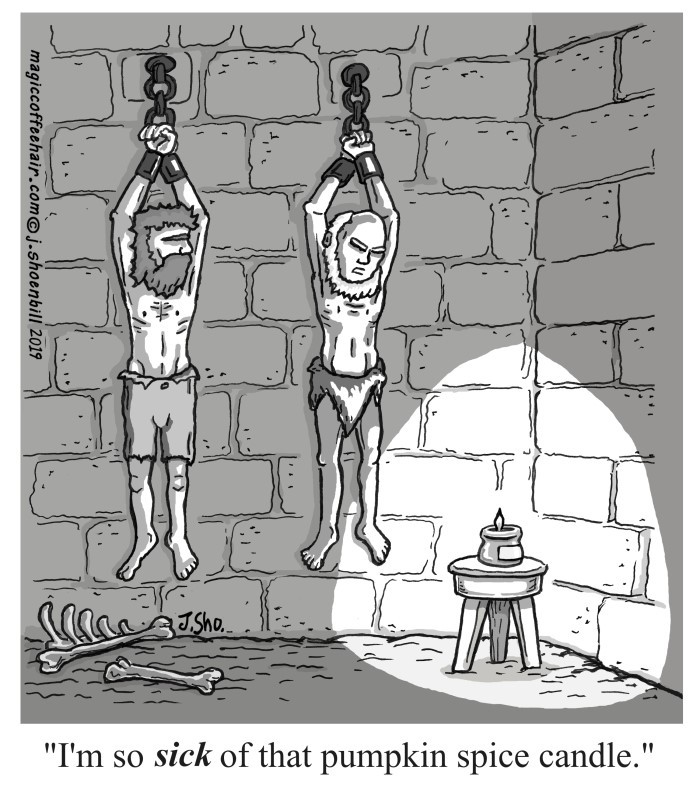











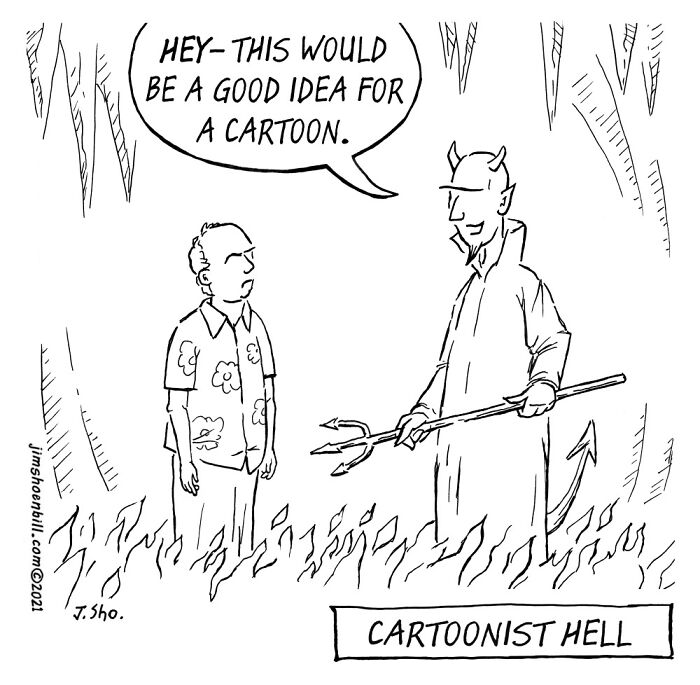





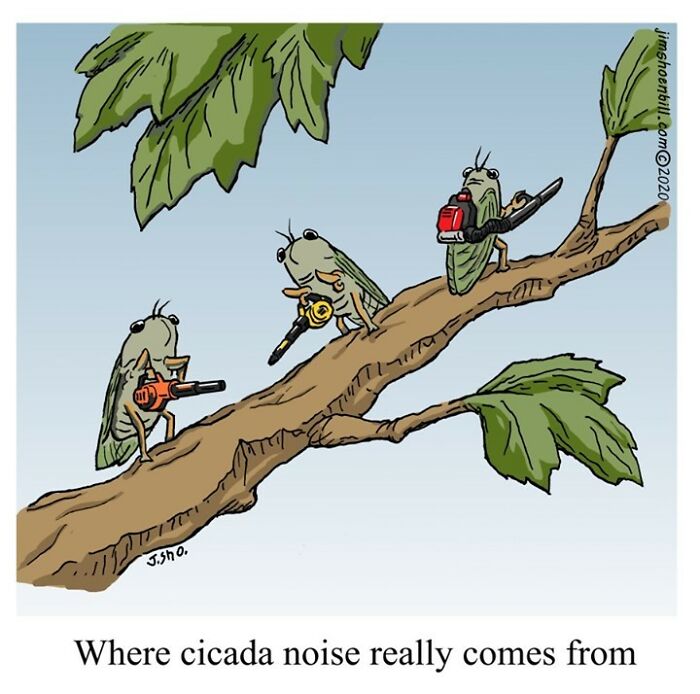





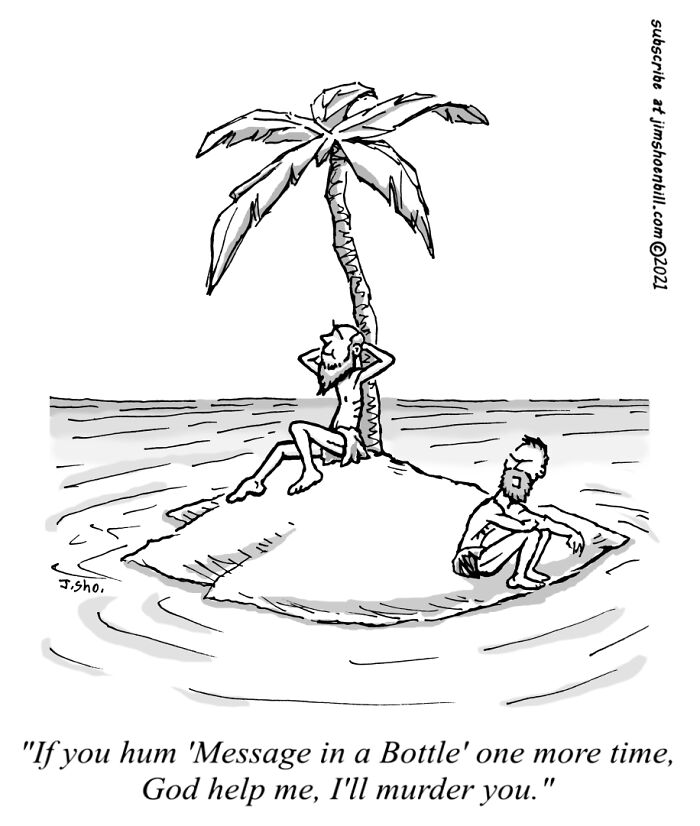

PCR’s latest. He says we are headed to war now:
“War With the Russian Federation
June 24, 2022
Dear Readers, this website, the Institute for Political Economy is a 501c3 tax-exempt public foundation. For it to continue to exist, public support must comprise one-third of its operating costs. Currently, this is the case. However, public support has been falling. The backbone of the website are the monthly donors. But the response to the quarterly requests are weakening. The response in September is always weak, but this June the response is weak as well. Is this the situation — when truth is most needed, support for it is running out? Once the ruling elites control the narratives, liberty, freedom, life as Americans knew it is dead. It is increasingly difficult to tell the truth as Americans are punished for doing so. If you do not support those few of us who are addicted to truth, truth will die.
War With the Russian Federation
Paul Craig Roberts
I remember when others tooted my horn. The French government of President Francois Mitterrand bestowed upon me the French Legion of Honor for the restoration of economic science. President Reagan sent his Budget Director, Jim Miller, to the award ceremony with a letter from Reagan giving me credit for Reagan’s successful economic policy that cured stagflation.
The US Department of the Treasury gave me its Silver Medal for “outstanding contributions to US economic policy.” Who’s Who in America gave me the Lifetime Achievements Award. The Press Club of Mexico gave me its International Journalism Award. When my children were born congratulatory letters arrived from such luminaries as the Chief of Naval Operations and Chairman of the Joint Chiefs of Staff. And so on.
Today, my horn is not tooted unless I do it myself, which I have not done but now will. I have ruined myself by telling the truth, and I don’t even get credit for that.
Yesterday (June 23, 2022) The Saker (Andrei Raevsky) wrote that it has become undeniable that what began as a Russian limited military operation in Ukraine has turned into an open and full-scale war between Russia and the West.
I was the first person to put into print that the “limited” aspect of Russia’s intervention in Donbass was a delusion.
Washington, I said, would never allow it to be limited.
For this obviously correct insight, Andrei denounced me as anti-Russian. Dmitry Orlov dismissed me as a crank who wanted nuclear war. In other words, my pointing out a Kremlin miscalculation that would result in a wider war was unwelcome despite its obvious truthfulness.
Well, as Andrei now acknowledges, the wider war I predicted is upon us.
The Kremlin’s receptivity to provocations have brought them to the situation where an insignificant country, certainly militarily, but in all respects, has blocked Russia’s provision of part of Russia — Kaliningrad. If the Kremlin, ever tolerant of provocations, accepts this, Russia is finished. If the Kremlin doesn’t accept it, Lithuania is finished.
As Lithuania is a NATO member–stupid decision–NATO will have to go to war or back down. The Jewish neoconservatives who control US foreign policy will not let them back down. Washington pays a lot for obedience and will expect NATO to comply.
In other words, Europe’s “leaders” are likely soon to be faced with a decision: Do we destroy Europe or do we give up our American payments?
They will take the money and run, but to where?
As a former Cold Warrior, as a former member of a presidential investigatory committee to assess the CIA’s views of Soviet economic and military capability, I can say, with confidence, that there is nowhere to run.
Unless the hegemony over US, and thereby the West’s, foreign policy that is held by the Jewish neoconservatives is broken, the West and Russia are headed into nuclear war.
The war will be nuclear, because the West is too weak conventionally to confront Russia.
The West is NOT aware of this, because the Russian Donbass intervention involves few Russian troops who are moving slowly using encirclement.
Normally, an invasion force relies on a 3 to 1 superiority in manpower, but in the Donbass conflict the Ukrainians probably outnumbered the Russians, with the mass of the Russian Army waiting on the sidelines for any NATO troop intervention.
There is no doubt whatsoever that Russia will clear Donbass of Ukrainian military forces. That job is almost over. But not the wider conflict.
EU and NATO forming coalition ‘for war against Russia’ – Lavrov
The Russian Foreign Minister said today: “Hitler rallied a significant part, if not most, of the European nations under his banner for a war against the Soviet Union,” adding that “now, the EU together with NATO are forming another – modern – coalition for a standoff and, ultimately, war with the Russian Federation.”
Streusel Coffee Cake
Everyone needs a classic coffee cake recipe. Simple to make and a treat to eat, this is it! Our cinnamon Streusel Coffee Cake recipe is the perfect one to wake up and create for a holiday brunch. It only takes 10 minutes of prep time and is made easy with Bisquick™ Original Pancake & Baking Mix.




Commando Network Coordinates Flow of Weapons in Ukraine, Officials Say
US miliatary fighting Russian military. And not a thought to the implications of what this means. -MM
A secretive operation involving U.S. Special Operations forces hints at the scale of the effort to assist Ukraine’s still outgunned military.
WASHINGTON — As Russian troops press ahead with a grinding campaign to seize eastern Ukraine, the nation’s ability to resist the onslaught depends more than ever on help from the United States and its allies — including a stealthy network of commandos and spies rushing to provide weapons, intelligence and training, according to U.S. and European officials. Much of this work happens outside Ukraine, at bases in Germany, France and Britain, for example. But even as the Biden administration has declared it will not deploy American troops to Ukraine, some C.I.A. personnel have continued to operate in the country secretly, mostly in the capital, Kyiv, directing much of the vast amounts of intelligence the United States is sharing with Ukrainian forces, according to current and former officials. At the same time, a few dozen commandos from other NATO countries, including Britain, France, Canada and Lithuania, also have been working inside Ukraine. The United States withdrew its own 150 military instructors before the war began in February, but commandos from these allies either remained or have gone in and out of the country since then, training and advising Ukrainian troops and providing an on-the-ground conduit for weapons and other aid, three U.S. officials said. . .here
This Stray Cat Ask To Be Let Inside To Keep Her Kittens Safe | The Dodo
A heartwarming kitty cat video.
Ukraine SINKS Russian Rescue Ship on Black Sea
The Russian Black Sea Fleet Rescue Tug “Vasily Bekh” has been hit by Ukrainian-launched missiles and SUNK.

The vessel was struck by two Harpoon anti ship missiles, a U.S. produced weapons system, manufactured by McDonnell Douglas.
The 187 foot long ship sank within 18 seconds of being hit.
At least ten (10) Russian sailors are dead, 23 others are wounded.
Video, below, was taken by a Bayraktar Drone operated by the Ukraine military, shows the two missiles striking from the left, and the ship going under almost immediately after the explosions.
The assault on the Vasily Bekh Rescue tugboat was first announced on the official Twitter account of the Ukrainian Ministry of Defense, and a few minutes later a video showing the assault was posted on social media.
Nicaragua approves Russian troop access to country, defies US objection
Hum. Interesting. The article seems to be blocked.

China ready to supply components for aircraft to Russia
MOSCOW, June 17. /TASS/. China is ready to supply components for aircraft to Russian airlines, Chinese Ambassador to Moscow Zhang Hanhui told TASS. "We are ready to supply components to Russia, we are organizing such cooperation," he said. "[Airlines] are currently addressing [it], they have certain channels, there are no restrictions from the Chinese side," the diplomat added. On February 26, the European Union prohibited sale and supply, including leasing, of aircraft and components to it for Russian air carriers, as well as provision of any insurance and reinsurance services to its aircraft, as well as repairs, over the situation in Ukraine. The Russian authorities responded by taking a number actions, particularly allowing local carriers to continue exploiting aircraft leased or rented from foreign companies.
Decoupling from China is not a serious option – Google Search
Of course.
If the Empire could do it, they would already have done it. I have a hunch that the powers that be in China are way ahead of the game before us mere mortals are aware of it. Perhaps the election of Xi to lead China is not an accident. Perhaps Xi's actions reining in the party and the PLA are not coincidences. Maybe his cleaning up of rampant corruption, strengthening of national defense, putting a lid on corporate malfeasance, and making term extensions possible are all for conducting a long and unspoken war. I await that moment when China finally is in firm possession of much needed technologies and resources, and then it can do what Russia has done, which is to demand payment in RMB for trade, stop measuring wealth or economics in USD, and sell 90% of USD reserves. China to this day is still one of the strongest supporters of the USD, which provides the hege-money that makes the empire possible. Take that away and the house of cards will fall. Maybe a better system and more responsible government will emerge. That will of course be up to the American people. Much better for the world is that America will not be able to afford its military adventurism, flooding the world with weapons, and creating havoc all over the world. Hence we will have peace. Only by attacking the empire's foundation, the dollar hege-money, that the house of cards will buckle and collapse. PM
Stunning Autochrome Portraits of Women Taken by Alfonse Van Besten From the Early 20th Century

Alfonse Van Besten (1865–1926) was a painter and took full advantage of the possibilities of the new color process. One can see that many of his autochromes were taken with a “painterly eye” e.g. Musing (Mrs.Van Besten) and Symphony in white. It was evident that he had a very good sense of composition.

During the First World War he was a refugee in Holland. Together with his friend A. Van Son, another Belgian autochromist and refugee, they gave countless lectures at Dutch photography societies. They were praised for their excellent autochrome work, e.g. on the 16th of April 1915 the photographic society “Meer Licht” from Nymegen paid an homage to Van Besten for his outstanding autochrome plates.





I could easily paint from these images. They are perfect to use as figurative guides.





Chinese tunnel boring machine shipped to Portugal
Just wait and see. The west always claimed that China steals their technology. But I know from very beginning that the West is using self deception. I was a manager for four years in a village collectively owned factory of 175 years before I went to college. The factory started in 1966, with less than thirty yuan investment with five workers. By 1973 when I joined the factory as a fresh high school graduate, the factory had over 100 workers, with three lathes, two planers, three 60 ton presses, five big drills, more than thirty electric welders and two gas welders. I started as a lathe operator, and then became the manager at the beginning of next year. By the time I went to college in the spring of 1978, the factory had 175 people with a gross revenue of more than one million a year. Most of the workers had very little technical background but everybody worked together to solve technical problems. One time, we took an order which required technical standards that we did not have the equipment to do. No factory in the Qingdao Areas had the equipment to do it. But one of our old workers came up with a brilliant idea and told me that we could do the work without the necessary equipment. We eventually did the job, making two huge ventilation machines for a big textile factory in Qingdao, and made a lot of money out of it. When the engineers came to see how we made it, they were shocked by the primitive ideas and technology we used to produce the parts and assembled the machines in the end. The workers in my factory were all paid the same amount of work points. Management and workers worked together to solve the problems. If we needed to work ten hours, twelve hours, even sixteen hours a day, we would do it. The shared objective was to get things done as quickly, efficiently and economically as possible. Exactly because the manager did not get more pay than the workers, it was much easier to be a leader at that time. I left China to study in Singapore, then the U.S. and eventually stayed in the U.S. After I came to the U.S. and learned how the system worked here, I was convinced that the West would never be able to compete with China if China stayed its track. I have been teaching under five (college) presidents in the current university. From my experience, except the first one who was a good leader. All the last four presidents were disasters. They got paid five or six times more than the faculty, but did nothing good for the college and they were either left themselves or asked to leave after they did enough damages. But most faculty and staff tolerated them until the last minutes. Our college has been going down hill because of their poor leadership. I think my college's situation is very reflective of the whole country in the U.S. The lack of good leadership with a big gap in the pay of the workers and management. It would be fine for them when there was no competition. But now China is a serious competition, and the U.S. and the west are still doing their business as usual. It will not be long when China leads the world in every aspect. Dongping
.
Journey – Lovin’, Touchin’, Squeezin’ (Official Video – 1979)
Time machine time…
Member of Russian Parliament Says “London will be Bombed first”
A Russian Member of Parliament, Andrey Gurulyov, has said that “London will be the first city to be bombed by Russia if the blockade of Kaliningrad leads to a war with NATO.”
MP Andrey Gurulyov, 54, a member of Russian parliament’s defense committee, advocated the Russian invasion of the NATO Baltic countries.
On state TV’s Channel 1 he said there was no other way to prevent the West blockading Russian exclave Kaliningrad.
Such a move would trigger the NATO Treaty “Article five” which says “an attack upon one member of NATO is an attack upon all members” and spark World War Three.
“We’ll destroy the entire group of enemy’s space satellites during the first air operation,” said Lt-Gen Gurulyov, a senior commander in the Russian Army who now represents United Russia, the main political party.
“No-one will care if they are American or British, we would see them all as NATO.
“Second, we’ll mitigate the entire system of anti-missile defense, everywhere and 100 per cent.
“Third, we certainly won’t start from Warsaw, Paris or Berlin.
“The first to be hit will be London.
“It’s crystal clear that the threat to the world comes from the Anglo-Saxons.”
Like other Moscow hardliners, he believes the West – especially on continental Europe – has no stomach for a real war.
“As part of the operation to destroy critically important sites, Western Europe will be cut off from power supplies and immobilized.
“All power supply sites will be destroyed.
“And in the third stage, I shall see what the USA will tell Western Europe on continuing their fight in the cold, without food and electricity.
“I wonder how they (the US) will manage to stay aside.
“This is the rough plan, and I deliberately leave out certain moments because they are not to be discussed on TV.”
Gurulyov is a former deputy commander of Russia’s southern military district.
He served with Russian forces in Syria.
He has been sanctioned by the US for his close links to Putin.
Pineapple-Banana Coffee Cake
Aloha! Your taste buds will welcome this tropical delight of banana coffee cake loaded with pineapple and topped with a pineapple glaze.



RUSSIANS CONQUER SEVERODONETSK; NEXT STOP: LYSYCHANSK
Russia’s army has “fully occupied” the key Ukrainian city of Severodonetsk after weeks of fighting, its mayor said Saturday.
“The city has been fully occupied by the Russians,” mayor Oleksandr Striuk said on Saturday.
A few hours earlier, pro-Moscow separatists said Russian troops and their allies had entered Lysychansk, which faces Severodonetsk across the river.
“Street fighting is currently taking place,” a representative of the separatists, Andrei Marochko, said on Telegram, in a claim that could not be independently verified at that time. Now, however, the city is confirmed to have been conquered by the Russian Army.
Grotesque, Occult, and Bizarre Images by William Mortensen, the Forgotten Hollywood Photographer

Photographer Ansel Adams, whose beautiful black and white landscapes full of mountains still grace both museum and office walls, called fellow photographer William Mortensen “the Anti-Christ” for what he did to the art of photography.

In a roll call of the pioneers of modern photography, one name is never invoked. From the late 1920s to the 1950s, William Mortensen was one of the most famous and celebrated photographers in America. However, his subject matter – which veered towards the savage, indecorous, gothic and grotesque – as well as his use of montage and illustration, made him a pariah among the puritanical new guard in photography, led by Ansel Adams, who tried to write him out of history.

Mortensen was the last of the great pictorialist photographers, the movement that dominated early 20th-century photography. Working in Hollywood, he shot many of the leading stars of his day: Rudolph Valentino, Lon Chaney, Fay Wray, Jean Harlow, Clara Bow and Peter Lorre all submitted themselves to the gaze of his lens.















Cat Trapped In A Sewer For 70 Days Is Almost Drowned From Heavy Rain
Save the kitty! Hurry!
Reality Check: Falsehoods in US perceptions of China
US Secretary of State Antony Blinken has recently delivered a speech at Asia Society outlining the US administration’s approach to China.
With a carefully calibrated language, he sought [1] to promote the “China threat” narrative, [2] continue American interference in China’s internal affairs, and [3] smear China’s domestic and foreign policy, all in a continuing effort aimed at [4] full-blown containment and suppression of China.
The following is the CHINESE RESPONSE.
It is printed in FULL.
You will NOT see this anywhere in American, or Western media.
…
In what is to follow, we will use facts and figures to show to the world how deceptive, hypocritical and dangerous the US’s China policy is.
Falsehood 1: China poses the most serious long-term challenge to the international order and is undermining it. The US will defend the international law, agreements, principles, and institutions that maintain peace and security, and protect the rights of individuals and sovereign nations.
Reality Check: What the US has constantly vowed to preserve is a so-called international order designed to serve the US’s own interests and perpetuate its hegemony. The US itself is the largest source of disruption to the actual world order.
◆ China has been and always will be a defender of the international order. China is a founding member of the United Nations (UN) and the first country to put its signature on the UN Charter. China is committed to upholding the UN-centered international system, the international order underpinned by international law, and the basic norms governing international relations built on the purposes and principles of the UN Charter. The Five Principles of Peaceful Coexistence jointly championed by China, India and Myanmar have been widely recognized by the international community and have become the basic norms guiding state-to-state relations.
China upholds true multilateralism and global strategic stability. China is the largest contributor of peacekeepers among the permanent members of the UN Security Council and the second largest contributor among all countries to the UN peacekeeping budget. China has taken an active part in international arms control, disarmament and non-proliferation processes. It has signed or acceded to more than 20 multilateral arms control, disarmament and non-proliferation treaties, including the Treaty on the Non-Proliferation of Nuclear Weapons (NPT) and the Arms Trade Treaty (ATT). China is against arms race.
In the wake of the international financial crisis of 2008, China adopted a responsible macro policy, remained a “stabilizer” for the world economy and made important contribution to global recovery. China actively provides international public goods to various countries, and has signed BRI cooperation agreements with 149 countries and 32 international organizations.
◆ In recent years, President Xi Jinping’s vision of building a community with a shared future for mankind has been warmly received by the international community. It has been written into multiple important documents issued by the UN, the Shanghai Cooperation Organization and other multilateral institutions. UN Secretary-General António Guterres hailed China as an important pillar for multilateralism, noting that the purpose for practicing multilateralism is to build a community with a shared future for mankind. Peter Thomson, president of the 71st Session of the UN General Assembly, said the vision of building a community with a shared future for mankind advocated by China is the only future for humanity on this planet.
In response to various new global challenges, President Xi Jinping put forward the Global Development Initiative (GDI) and the Global Security Initiative (GSI). They represent China’s proposals for making the global governance system fairer and more equitable, and have received positive response and wide support from the international community.
◆ The US has blatantly violated the purposes and principles of the UN Charter and the norms governing international relations. With its military might, the US has launched wars in numerous parts of the world, stoking divisions and conflicts and bringing huge turmoil and disaster to the world. Throughout the 240-plus-year history of the US, there were only 16 years in which the US was not at war. The US might as well be called the most belligerent country in the history of the world. US magazine The National Interest quoted Dakota Wood, senior research fellow for defense programs at the Heritage Foundation, who wrote that the US consistently needed to deploy military force every 15 years or so.
Since the end of World War II, the United States has either launched or participated in many wars overseas, including the Korean War, the Vietnam War, the Afghan War and the Iraq War. Those wars caused extremely severe civilian casualties and property losses, and lead to colossal humanitarian disasters. Since 2001, US wars and military operations in the name of counterterrorism have killed more than 900,000 people, about 335,000 of whom were civilians, injured millions and displaced tens of millions.
◆ The US habitually puts its domestic law above the international law, and selectively applies international rules as it sees fit. Since the 1980s, the US had once withdrawn from 17 international organizations and treaties, including the United Nations Human Rights Council (UNHRC), the World Health Organization (WHO), the United Nations Educational, Scientific and Cultural Organization (UNESCO), the Paris Agreement, the Joint Comprehensive Plan of Action (JCPOA), the Arms Trade Treaty (ATT), the Intermediate-Range Nuclear Forces (INF) Treaty and the Treaty on Open Skies.
Although the current US administration declared that “America is back” and the US has rejoined some international organizations and agreements, the administration has in essence not abandoned the “America First” policy, and is advancing “selective multilateralism”. The current administration has stayed out of institutions and agreements considered harmful to US interests such as the Treaty on Open Skies. European media have described it as “America First 2.0”.
◆ The US has abused its financial hegemony and technological clout and engaged in economic coercion in the name of protecting national security. The US has enacted some domestic laws, such as the International Emergency Economic Powers Act, the Global Magnitsky Human Rights Accountability Act and the Countering America’s Adversaries Through Sanctions Act, and issued a series of executive orders to target and sanction specific countries, entities or individuals. The ambiguous rules contained in these acts and executive orders, such as the “minimum contacts principle” and “doctrine of effects”, are a willful expansion of the jurisdiction of US domestic laws. The US also abuses its domestic channels of prosecution to exercise long-arm jurisdiction over entities and individuals in other countries.
For more than 60 years, in total disregard of the many resolutions of the UN General Assembly, the US has continued its comprehensive blockade against Cuba based on its embargo policies and domestic laws such as the Torricelli Act and the Helms-Burton Act. The Cuba blockade is the longest and cruelest systemic trade embargo, economic blockade and financial sanctions in modern history. The blockade has been gravely detrimental to Cuba’s economic and social development, causing over 100 billion US dollars of direct losses to Cuba’s economy.
The US has carried out blockade and sanctions against Iran since late 1970s. In May 2018, the US government announced its unilateral withdrawal from the JCPOA, and soon after resumed and expanded sanctions against Iran. Many countries and relevant entities have been forced to give up their cooperation with Iran. A large number of foreign oil enterprises left the country. Iran’s manufacturing industry can hardly sustain normal operation. The country has suffered economic slowdown, coupled with heightened inflation and massive currency depreciation.
The US has imposed unilateral sanctions on Belarus, Syria and Zimbabwe, among others, over the years, and ratcheted up ”maximum pressure” against the DPRK, Venezuela, etc.
◆ Statistics show that the previous US administration had imposed over 3,900 sanction measures, which means it wielded its “big stick” three times a day on average. As of fiscal year 2021, the entities and individuals on US sanction lists topped 9,421, which was 933 percent higher compared to the fiscal year 2000.
The US’s illegal unilateral sanctions and long-arm jurisdiction have gravely undermined the sovereignty and security of other countries and severely impacted their economic development and people’s wellbeing. The sanctions and long-arm jurisdiction also constitute a gross violation of international law and basic norms of international relations.
In an article published in the September/October 2021 issue of Foreign Affairs, Daniel Drezner, Professor at Tufts University and Senior Fellow at the Brookings Institution, criticizes successive US administrations for using “sanctions as the go-to solution for nearly every foreign policy problem.” He notes that sanctions not only are ineffective, but also “exert a humanitarian toll”, and that the United States of America has become the “United States of Sanctions”.
◆ The “rules-based international order” championed by the US is in fact another version of power politics. This is an attempt to impose one’s own will and standards on others, and to replace the commonly accepted international laws and norms with the house rules of a few countries.
In the world, there is only one international system, i.e. the international system with the UN at its core. There is only one international order, i.e. the international order underpinned by international law. And there is only one set of rules, i.e. the basic norms governing international relations underpinned by the purposes and principles of the UN Charter.
Before wanting to discuss rules and order, the US should first pay up its arrears of one billion US dollars for the UN’s regular budget and 1.4 billion US dollars peacekeeping assessments, ratify in a timely manner the United Nations Convention on the Rights of the Child and the Convention on the Elimination of All Forms of Discrimination against Women, stop single-handedly blocking the negotiations on a verification protocol under the Biological Weapons Convention (BWC), lift illegal unilateral sanctions, earnestly fulfill its international obligations and set a good example for others in respecting laws and norms.
Falsehood 2: The US is not looking for conflict or a new Cold War. It doesn’t seek to block China from its role as a major power, nor to stop China from growing its economy or advancing the interests of its people.
Reality Check: Despite its claims that it doesn’t seek to block China from its role as a major power, nor to stop it from growing its economy, the US is actually deploying its domestic and external resources to unscrupulously contain and suppress China.
◆ Without producing any credible evidence, the US government uses national security as a catch-all pretext and all its apparatus to wantonly suppress and sanction Huawei, restricting its products’ entry into the US market, cutting off its access to chips and operating system, and coercing countries around the world into banning Huawei from their 5G rollout. The US also orchestrated and pressured Canada to hold Huawei’s CFO for nearly three years without cause.
◆ In violation of the principle of fair competition and market economy and international trading rules, the US seeks to hamstring competitive Chinese hi-tech companies under all kinds of trumped-up charges. To date, it has placed over 1,000 Chinese companies on various sanctions lists, subjected biotechnology and artificial intelligence technologies to enhanced export controls and stringent investment review, and sought to ban Chinese social media platforms including TikTok and WeChat.
◆ Under the pretext of protecting human rights, the US has fabricated misinformation and disinformation concerning Xinjiang such as the existence of ”forced labor” and, on the basis of those unfounded stories, has adopted the Uyghur Forced Labor Prevention Act which maliciously targets Xinjiang’s competitive cotton, tomatoes and solar photovoltaic sectors to contain China’s growth. This has disrupted the international trade order and destabilized global industrial and supply chains.
◆ The previous US administration, in grave violation of WTO rules, waged a massive trade war on China. Based on its own Section 301 investigation, it imposed three rounds of steep tariffs on about 360 billion US dollars’ worth of Chinese imports. In September 2021, the current US administration initiated a Section 232 investigation to determine the effects on US national security from imports of neodymium-iron-boron permanent magnets at a time when global commodity prices were hovering at elevated levels.
◆ The US has a record of grossly interfering in China’s domestic affairs on issues concerning China’s core interests, including Taiwan, Xinjiang, Tibet and Hong Kong. It seeks to undermine China’s security and stability by, both overtly and covertly, condoning and supporting separatist activities.
◆ The bipartisan innovation bills being debated in the US Congress, while professing to enhance US competitiveness, see China as a perceived rival. “China” appears more than 800 times in the text, which is packed with provisions detrimental to China’s interests.
◆ In a bid to maintain its power and predominance in international institutions, the US has attempted to smear and block the vision of building a community with a shared future for mankind and the initiative of advancing Belt and Road cooperation, among others, in multilateral fora and also to remove references to them in UN and other international documents.
◆ Clinging to a Cold War mentality and the hegemon’s logic, the US pursues bloc politics, concocts the “democracy versus authoritarianism” narrative, cajoles other countries into forming exclusive cliques, strengthens the Five Eyes, peddles the Quad mechanism, puts together AUKUS with the UK and Australia and ramps up bilateral military alliances, in a clear attempt at countering China.
◆ The US pushes NATO to insert itself in Asia-Pacific affairs, fan the “China threat” narrative in the bloc’s new strategic concept, and include in its Madrid Summit such US allies in the Asia-Pacific as Japan, the Republic of Korea (ROK) and Australia, in a bid to build an “Asia-Pacific version of NATO”, which would disrupt security and stability in the Asia-Pacific region.
◆ The development of state-to-state relations should be based on equality, mutual respect and win-win results. China-US relations have reached an important crossroads. The US should stop viewing this relationship through a Cold War, zero-sum mindset, follow the three principles of mutual respect, peaceful coexistence and win-win cooperation, and reflect in its action the five assurances it has made to China (i.e. the US does not seek a new Cold War with China, the US does not seek to change China’s system, the revitalization of US alliances is not against China, the US does not support “Taiwan independence”, and the US is not looking for conflict with China) .
Falsehood 3: Our diplomacy is based on partnership and respect for each other’s interests, while China practices coercive diplomacy against other countries and retaliates recklessly. Our task is to prove once again that all countries will be free to chart their own paths without coercion.
Reality Check: It is the US that invented “coercive diplomacy” and excels at coercing countries. Over the years, by imposing economic blockade, unilateral sanctions and other means, the US has practiced coercive diplomacy around the world with textbook examples.
◆ In 1971, American scholar Alexander George first put forward the concept of “coercive diplomacy” to summarize the US policy toward Laos, Cuba and Vietnam at that time. The US government forced the military government of Haiti to step down in 1994, and referred to that as “a textbook example of coercive diplomacy”. In 2003, it explicitly characterized 30.3 billion US dollars additional military expenses for “coercive diplomacy” as incurred expenses.
The US government froze seven billion US dollars assets of the Afghan central bank on the grounds of punishing the Afghan Taliban and even claimed the “life-saving money” of the Afghan people as its own, which resulted in the deterioration of the humanitarian situation in Afghanistan. Mohammad Naeem, spokesman of the Taliban Political Office in Doha, said the seizure is “indicative of the lowest level of human and moral decay of a country and a nation”.
In order to force the Nepalese parliament to approve the Millennium Challenge Corporation (MCC) agreement, the US openly issued an “ultimatum”, saying that the US will review its ties with Nepal if it fails to ratify the compact.
After the outbreak of the Ukraine conflict, the US Justice Department established the “Task Force KleptoCapture” to find, freeze and seize the yachts, apartments, private jets and huge deposits of Russian citizens in the US and Europe. This fully shows that the US-touted “inviolable and sacred right to property” is just a lie. The US has forced other countries to pick sides and pressured them to join sanctions against Russia. And those who refuse to do so will pay a “price”.
After China and the Solomon Islands had signed a framework agreement on bilateral security cooperation, the US sent senior officials of the National Security Council to the country, doing whatever it can to obstruct the legitimate cooperation between China and Solomon Islands. A Solomn Star article pointed out, “Washington DC, which has literally forgotten Solomon Islands since World War II, has finally woken up and is applying the heat on the Solomon Islands to abandon the security pact.”
In May 2022, on the eve of the High-Level Virtual Meeting of the Group of Friends of the GDI, the US exerted pressure on multiple UN development agencies to obstruct their attendance and threatened to “cut funding”.
◆ The “Clean Network” program launched by the previous administration is another textbook example of US coercive diplomacy. Under the pretext of upholding US national security and citizens’ privacy, the program explicitly requires that Chinese companies such as Huawei, Baidu and Alibaba to be purged from five areas: telecom operators, mobile app stores, mobile apps, cloud services and submarine optical cables. The then US Secretary of State Mike Pompeo and other US politicians lobbied all around the world, coercing countries and regions to join its so-called “Network”. A US senior official even threatened Cyprus and other countries not to work with Chinese 5G suppliers, or they would bear the consequence. Former UK Business and Industry Minister Vince Cable said the government’s decision to ban Huawei’s 5G equipment and services “had nothing to do with national security”, and was because “the Americans told us we should do it”.
◆ The US shows no mercy in coercing its allies. Out of its geopolitical and energy interests considerations, the US has imposed sanctions on the Nord Stream 2 natural gas pipeline project since December 2019. Since the outbreak of the Russia-Ukraine conflict, the US has imposed new sanctions on related companies and personnel even though Germany had announced the suspension of the certification process for the project.
◆ A US scholar pointed out that American foreign policy since World War II has been based on a simple idea: “Either you are with us or against us. America should lead, allies should follow, and woe be to countries that oppose its primacy”. His words lay bare the nature of US coercive diplomacy.
◆ China never engages in coercive diplomacy and firmly opposes coercive diplomacy by other countries. China never threatens other countries with force, never creates military alliance, never exports ideology, never meddles in others’ domestic affairs, never seeks a trade war, and never imposes unjustified oppression on foreign enterprises. That said, however, China has the right to make necessary and legitimate responses to actions that undermine China’s sovereignty, security and development rights and interests.
Falsehood 4: The US democracy is one of the most powerful assets in this contest. Our task is to prove once again that democracy can meet urgent challenges and that the future belongs to those who believe in freedom.
Reality Check: The US sets standards for democracy after its own system, does not allow other systems, paths and models to exist, and gangs up with others to wantonly interfere in other countries’ internal affairs in the name of democracy. This not just contravenes the spirit of democracy, but also spells disaster for democracy.
◆ The American-style democracy is a rich men’s game based on capital. Money politics penetrates the entire process of election, legislation and administration in the US. People in fact only have a restricted right to political participation. The inequality in economic status has turned into inequality in political status. According to statistics, winners of 91 percent of US congressional elections are the candidates with greater financial support. Big companies, a small group of rich people, and interest groups are more generous to offer financial support and have become the main source of electoral funding. The so-called representatives of people’s will, once elected, often serve the interests of their financial backers, and speak for vested interests rather than the ordinary people. A US Senator had a sharp observation, “Congress does not regulate Wall Street. Wall Street regulates Congress.”
US Republican congressman from Alabama Mo Brooks publicly denounced ”corruption” of the US Congress in a video on social media. “If you want to be chairman of a major committee, you have to purchase it.” The purchase price depends on how important the committee is, with the minimum bid for a major committee being one million US dollars. Those who cannot afford it have to accept the contributions of special interest groups and then give ”quid pro quos” to the lobbyists. “Special interest groups run Washington. I don’t mean that metaphorically, I mean that literally.”
◆ According to a scholar in Singapore, the United States is clearly not functioning as a democracy. It is functioning as a plutocracy. A democracy is a government of the people, by the people, for the people. A plutocracy is a government of the one percent, by the one percent, for the one percent.
◆ The US presidential election follows the Electoral College system, where the president and vice president are elected by the Electoral College. The flaws of such an electoral system are self-evident. First, as the president-elect may not be the winner of the national popular vote, there is a lack of broad representation. Second, as each state gets to decide its own electoral rules, confusion and disorder often occur. Third, the winner-takes-all system exacerbates inequality among states and between political parties. It leads to a huge waste of votes and discourages voter turnout. Voters in deep blue and deep red states are often neglected, while swing states become disproportionately more important where both parties seek to woo more supporters. There have been five presidential elections in US history in which the winner of nationwide popular vote was not elected the president.
The gerrymandering is widely recognized by the US public as a flaw of the electoral system. It refers to an unfair division of electoral districts in favor of a particular party to win as many seats as possible and cement its advantage. The US conducts a census every ten years. Following the completion of the census, redistricting or the redrawing of electoral district boundaries will take place under the principle of maintaining roughly equal population in every voting district while considering demographic shifts. Under the US Constitution, each state legislature has the power to redistrict. This leaves room for gerrymandering by the majority party in a state legislature. According to a YouGov poll in 2021, only 16 percent of US adult citizens say they think their states’ congressional maps would be drawn fairly, while 44 percent say they think the maps would be drawn unfairly and another 40 percent of adults say they are unsure if the maps will be fair.
◆ The American-style democracy is ”one person one vote” in name, yet “rule of a dominant minority” in reality. Political pluralism is only a facade. A small number of elites dominate the political, economic and military affairs. They control the state apparatus and policy-making process, manipulate public opinion, dominate the business community and enjoy all kinds of privileges.
According to the Associated Press, 18.8 million people were missed in the 2020 US census. The black population had a net undercount of 3.3 percent, while it was almost five percent for Hispanics and 5.6 percent for American Indians and Native Alaskans living on reservations. The undercount robs them of their equal share of federal resources including in education, health care and housing and puts them in an unfavorable condition as to congressional apportionment. It reveals the hypocrisy in the US democracy and its “perpetuating systemic racism”.
Noam Chomsky, a political commentator and social activist from the Massachusetts Institute of Technology, points out that the US is a “really existing capitalist democracy”, where there is a positive correlation between people’s wealth and their influence on policy-making. For the lower 70 percent on the wealth/income scale, they have no influence on policy whatsoever. They are effectively disenfranchised.
Wertheimer, President of the non-profit US organization Democracy 21, says that corruption in the US is systemic corruption of the process itself. “When you are dealing with billions and billions of dollars, much of that focused on buying influence, it overwhelms the system, and it is much harder to defend against and maintain representation for ordinary Americans.”
Danny Haiphong, an independent journalist in the US, believes that Western-style democracy views the election itself as the highest achievement. The question of whether this system serves the needs of the broad masses of people is generally ignored in order to obscure the fact that powerful corporate interests set the policy agenda well before votes are cast.
◆ The checks and balances in the American-style democracy have resulted in a “vetocracy”. American political scientist Francis Fukuyama points out in his book Political Order and Political Decay that there is an entrenched political paralysis in the US. The US political system has far too many checks and balances, raising the cost of collective action and in some cases making it impossible altogether. The US democratic process is fragmented and lengthy, with a lot of veto points where individual veto players can block action by the whole body. The function of “checks and balances”, which was purportedly designed to prevent abuse of power, has been distorted in American political practice. Politicians in Washington, D.C. are preoccupied with securing their own partisan interests and no longer care about national development. The two parties are addicted to vetoing and caught in a vicious circle. The government efficacy is inevitably weakened, law and justice trampled upon, development and progress stalled, and social division widened.
According to a Pew Research Center report in October 2021 based on a survey of 17 advanced economies including the US, Germany and the ROK, the US is more politically divided than the other economies surveyed. Nine in ten US respondents believe there are strong conflicts between people who support different political parties, and nearly 60 percent of Americans surveyed think their fellow citizens no longer disagree simply over policies, but also over basic facts.
As political and partisan polarization continues to grow, more “opposition for opposition’s sake” is seen among Democrats and Republicans. Under its influence, voters of the two parties are increasingly antagonized over gun policy. Among Republican voters, 76 percent support the right to possess guns, while 81 percent of Democratic voters see gun control as more important. Hijacked by interest, partisan conflict and the public opinion, the legislation and law enforcement process of gun control is fraught with difficulties. For the past ten years, Democratic congressmen put forward dozens of bills on gun violence and gun control every year, but due to the continued obstruction from the Republican Party, only a handful of them successfully entered the plenary deliberation and debate stage at the Senate or the House of Representatives.
The US National Rifle Association (NRA) has five million members and spends hundreds of millions of dollars on advertising and lobbying every year. Its tentacles penetrate deep into the fabric of the American society. The NRA is an important funder of the Republican Party. Since its establishment in 1871, the NRA has successfully attracted nine US presidents to join it. According to CNN statistics in 2018, 307 of the 535 US congressmen have received either direct campaign contributions from the NRA and its affiliates or benefited from independent NRA spending like advertising supporting their campaigns. In the face of huge profits, all kinds of gun control efforts have ended up in vain.
◆ The US is not a straight A student when it comes to democracy. Its practice of democracy has been messy and chaotic. On 6 January 2021, thousands of Americans gathered on Capitol Hill in Washington, D.C. and stormed the Capitol building in a bid to stop the joint session of the Congress from certifying the newly-elected president. The incident interrupted the transfer of US presidential power, leaving five dead and over 140 injured. It is the worst act of violence in Washington, D.C. since 1814 when the British troops set fire to the White House, and it sent shock waves throughout the international community. The US Senate Republican leader described it as a “failed insurrection”.
A scholar from the US Council on Foreign Relations says that the US is not nearly as unique as many Americans believe, and that the Capitol riot should put an end to the notion of American exceptionalism, of an eternal shining city on a hill.
An American expert on international issues wrote in The New York Times that while the US leader has reunited the West, he may not be able to reunite America. Trump and his supporters would be willing to depart from established constitutional rules and norms with his Big Lie. This may undermine the ability of the US government to transfer power peacefully and legitimately. Consequently none of the institutions will work for long, and the people will be thrust into political and financial chaos.
◆ The dysfunctional American-style democracy has triggered a trust crisis. Public commitments to the people come with behind-the-scene deals. Political infighting, money politics, and vetocracy make it virtually impossible for quality governance to be delivered as aspired by the general public. Americans are increasingly disillusioned with the US politics and pessimistic about the American-style democracy.
A Gallup survey in October 2020 shows that only 19 percent of the Americans surveyed are “very confident” about the presidential election, a record low since the survey was first conducted in 2004. According to a poll conducted by The Wall Street Journal in June 2022, six out of 10 Americans feel pessimistic about achieving the American dream.
A Pew Research in 2021 shows that 65 percent of Americans see a need for major reform to the American democracy. People’s confidence in the American democracy dropped in 16 developed countries, and 57 percent of respondents think that the American democracy is no longer a good example to follow.
The Democracy Perception Index released in 2021 by a German polling agency reveals that 44 percent of respondents in the 53 countries surveyed are concerned that the US threatens democracy in their country.
◆ Over the years, despite the structural flaws and problematic practice of its democratic system, the US has been touting the “alliance of democracies” and hyping up the narrative of “democracy versus autocracy”. It is in essence attacking those who hold different views under the banner of democracy, using ideology and values as a tool to suppress others and advance its own geopolitical strategies. This is hegemony in the guise of democracy. A former CIA official openly stated: “We will intervene whenever we decide it’s in our national security interest to intervene. If you don’t like it, lump it.”
The US has pushed for the neo-Monroe Doctrine in Latin America under the pretext of promoting democracy, incited color revolutions in Eurasia, and remotely controlled the Arab Spring in West Asia and North Africa. These moves have brought chaos and disasters to many countries, gravely undermining world peace, stability and development. As suggested by the French website Le Grand Soir, democracy has long become a weapon of massive destruction for the US to attack countries with different views.
◆ Whether a country is democratic or not depends on whether its people are truly the masters of the country. It depends on whether the people have the right to vote, and more importantly, the right to participate; what promises they are given during elections, and more importantly, how many of these promises are delivered after elections; what kind of political procedures and rules are set through state systems and laws, and more importantly, whether these systems and laws are truly enforced; and whether the rules and procedures for the exercise of power are democratic, and more importantly, whether the exercise of power is genuinely subject to public oversight and checks.
◆ The Communist Party of China (CPC) leads the Chinese people in carrying out the whole-process people’s democracy in China. It has not only a complete set of institutions and procedures, but also full-fledged civil participation. A comprehensive, extensive, and well-coordinated system of institutions has been formed to ensure that the people run the country, and diverse, open, and orderly channels for democracy are put into place. This allows the entire people to engage in law-based democratic elections, consultations, decision-making, management, and oversight and to manage state as well as economic, cultural, and social affairs in various ways and forms and in accordance with the law. The whole-process people’s democracy integrates process-oriented democracy with results-oriented democracy, procedural democracy with substantive democracy, direct democracy with indirect democracy, and people’s democracy with the will of the state. It is a model of socialist democracy that covers all aspects of the democratic process and all sectors of society. It is a true democracy that works. China’s whole-process people’s democracy is gaining wider recognition and acclaim from the international community.
A British scholar says that electoral democracy does not breed a close relationship with the people and government, because the people are only called upon to be involved whenever to make elections take place. The Chinese approach is different in that there is a very important consultative component in the way China operates.
◆ Democracy is a concrete phenomenon that is constantly evolving. Rooted in history, culture and tradition, it takes diverse forms and develops along the paths chosen by different peoples based on their exploration and innovation. China stays committed to respecting the sovereignty and territorial integrity of all countries, uphold non-interference in internal affairs, and respect the independent choices of development paths and social systems made by people in different countries. China has no intention to engage in systemic rivalry or ideological confrontation with the US. China never exports ideology, never interferes in other countries’ internal affairs, and never seeks to change the system of the US.
Falsehood 5: The US has profound differences with the CPC and the Chinese Government. But those differences are between governments and systems – not between our people.
Reality check: The CPC’s leadership is the choice of history and of the people. The CPC and the Chinese government enjoy the wholehearted support and endorsement of the Chinese people. The US’s attempt to drive wedges between the CPC and the Chinese people only serves to reveal its animosity against China’s system and path.
◆ The CPC has deep roots among and close ties with the Chinese people. This is what has kept the CPC full of vigor and vitality. By the end of 2021, the CPC had over 95 million members. The CPC is the largest party in the world that has exercised long-term governance in the world’s most populous country. Under the leadership of the CPC, China has created the two miracles of rapid economic development and long-term social stability. Over 800 million people have been lifted out of poverty and 1.4 billion people are moving toward modernization. Over the course of just several decades, China has accomplished what took western developed countries hundreds of years.
A Harvard University survey among the Chinese people spanning 13 years found that more than 90 percent of respondents are satisfied with the Party and their government, the highest rate among countries for years running. A trust and credibility survey released in 2022 by Edelman, a renowned US public relations consultancy firm, shows that as many as 91 percent Chinese citizens trust their government in 2021, the highest among all surveyed countries.
◆ The previous US administration, in a McCarthyism-style campaign, went all out to attack and discredit the CPC. It has attacked Chinese leaders and China’s domestic and foreign policies, sown discord between the CPC and the Chinese people, flagrantly challenged the leadership and governing position of the CPC, incited anti-China and anti-CPC sentiment, and imposed visa restrictions on CPC members and their families.
The current administration, since its inauguration, has made no substantive changes to those policies. In June 2021, the US Senate passed the United States Innovation and Competition Act of 2021, which is more than 2,000 pages long. It regarded China as a strategic competitor and the main challenge to the US, slandered China’s development path and domestic and foreign policies, and malignantly urged actions to counter the “influence and malign activities” of the CPC. It asked for more than 200 billion US dollars of public funding to ensure US advantages in key technology sectors over China, and advocated mobilizing US resources in strategic, diplomatic, economic, and technological realms to engage in comprehensive strategic competition with China. The US Senate also proposed an appropriation of 300 million US dollars for each of the fiscal years 2022 through 2026 to “counter the malign influence” of the CPC and designated the US Department of State and Agency for International Development to train journalists on investigative techniques necessary to ensure public accountability related to the Belt and Road Initiative, including “supporting civil society and independent media”.
The US continues to use the CPC background as a pretext for cracking down on normal people-to-people exchanges and cooperation. For some time, Chinese students and visiting scholars going to the US have been harassed and suppressed by the US. Most of them were asked whether they or their parents are CPC members. Some were repatriated on inconceivable grounds, such as being suspected of military connections simply because they had photos in their mobile phones of military training at college. These stop-and-search activities go far beyond what the US claims as “normal law enforcement”.
◆ The CPC, the Chinese government and the Chinese people share an inseparable bond. The US says it respects the Chinese people, then it should respect the development path and political system chosen by the Chinese people and respect the CPC that represents the fundamental interests of the Chinese people. By targeting the CPC and the Chinese government, the US is in effect targeting the Chinese people. Anything done to separate the CPC, the Chinese government and the Chinese people and pit the Chinese people against the CPC and the Chinese government will surely be met with the unanimous opposition and resolute response of the over 1.4 billion Chinese people.
Falsehood 6: The United States raises human rights issues and calls for change – not to stand against China, but to stand up for peace, security, and human dignity.
Reality Check: The human rights of the Chinese people are guaranteed like never before, with a notable increase in their sense of fulfillment, happiness and security. In contrast, the US has been engaged in grave human rights violations both at home and abroad, and its shocking track record makes it the biggest human rights abuser in the world.
◆ China always puts people’s right to subsistence on top of its agenda, prioritizes the work to enhance their right to development, regards the protection of citizens’ lawful rights and interests as its basic task, has made the safeguarding of the rights of ethnic groups an important part of its work, and considers the protection of people’s safety its long-term goal.
Guided by a people-centered philosophy, since the day when it was founded, the CPC has made seeking happiness for the Chinese people and rejuvenation for the Chinese nation its mission. For the past 100 years, the Party has been working tirelessly for the interest of the people, and has dedicated itself to realizing people’s aspirations for a better life. China has been advancing whole-process people’s democracy, promoting legal safeguard for human rights, and upholding social equity and justice. The Chinese people now enjoy fuller and more extensive and comprehensive democratic rights.
◆ China has created the miracle of eliminating absolute poverty. By the end of 2020, China has lifted all 98.99 million rural residents living below the current poverty line out of poverty. In 2021, China completed the building of a moderately prosperous society in all respects, and historically resolved the problem of absolute poverty. Since the launch of reform and opening-up, 770 million impoverished rural residents have shaken off poverty as currently defined. Based on the international poverty line of the World Bank, China accounts for 70 percent of global poverty reduction over the same period. China met the poverty reduction goal of the UN 2030 Agenda for Sustainable Development ten years ahead of schedule, making major contributions to global poverty reduction and human rights progress. China has also put in place the world’s largest education system, the largest social security system and the largest health care system.
◆ Since COVID-19 started, China has been acting on the principle of putting the people and their lives first. Based on China’s national conditions, it has formulated and implemented a dynamic zero-COVID guideline, and has been constantly fine-tuning its response measures in light of the evolving situation, to best protect people’s life and health and at the same time, ensure sustained, sound and steady socioeconomic development with the pandemic under effective control. Both the infection rate and mortality rate of China are the lowest in the world.
◆ As an active participant in global human rights governance, China has made its contribution to and offered its initiatives on world human rights development. In recent years, the concept of “building a community of shared future” has been written into the resolutions of the UN Human Rights Council, and China-sponsored resolutions on “the contribution of development to the enjoyment of all human rights” and on “Promoting Mutually Beneficial Cooperation in the Field of Human Rights” were adopted multiple times at the Human Rights Council. China also made joint statements on behalf of developing countries on the implementation of the right to development, the promotion of human rights by poverty alleviation, equitable distribution of vaccines, among other subjects, contributing its share to safeguarding the basic human rights of developing countries, which has won it wide recognition and support from the international community.
◆ China has been an advocate and a doer in advancing the international human rights cause. A World Bank study estimates, if implemented fully, the Belt and Road Initiative could lift 32 million people out of moderate poverty — those who live on less than $3.2 a day. It shows how participating in Belt and Road cooperation can advance human rights in more countries. In the face of the pandemic, China launched its largest global humanitarian operation since the founding of the People’s Republic, and championed the building of a global community of health for all. To address the global development deficit, China proposed the Global Development Initiative (GDI) which sees improving people’s welfare and achieving well-rounded human development as the fundamental purpose and goal. The GDI has been echoed and supported by more than 100 countries and many international organizations including the UN. The Initiative galvanizes extensive international consensus for accelerated implementation of the UN 2030 Agenda for Sustainable Development, and builds up international synergy for coordinated development, thus providing a strong underpinning for the advancement of the international human rights cause.
◆ The right to life is of utmost importance, as survival is the basis of all human rights. Endowed with the world’s most advanced medical equipment and technologies, the US has registered the world’s largest number of COVID-19 infections and deaths. Pandemic response has been extremely politicized, and become a tool and lever to attack, undercut and oppose each other between the Republicans and the Democrats. Politicians only focus on political gains, with no regard to the life and health of the ordinary people. Its pandemic control, which has been unscientific, unequal and irresponsible, has gravely undermined American people’s right to life and health.
So far, the COVID-19 death toll in the US has surpassed one million. The deaths are, according to The Atlantic, “unexpected, untimely, particularly painful, and, in many cases, preventable”. Some politician even suggested that old people may sacrifice themselves for the country and that saving the country’s economy is more important than old people’s lives. Data of the US Center for Disease Prevention and Control shows that most COVID victims are aged 65 years and above. USC and Princeton researchers project that due to the pandemic deaths last year, life expectancy at birth for Americans will shorten by 1.13 years, the sharpest decline since World War II. ”For Blacks, the life expectancy would shorten by 2.10 years, and for Latinos, by 3.05 years. Whites are also impacted, but their projected decline is much smaller – 0.68 years.”
The Washington Post points to a far greater number behind the one million death toll: That number is 9 million – the number of Americans who have lost spouses, parents, grandparents, siblings and children to COVID. A study by the Imperial College London estimates that more than 250,000 US children had lost a parent or caregiver to COVID-19 by 23 May 2020. Figures released by the US Government Accountability Office in March 2022 show that up to 23 million people in the US may have developed “long COVID”, and an estimated one million people suffering from the symptoms may be pushed out of work.
The US is the country most rampant with gun violence. Its population, totaling 333 million or 4 percent of the world’s total, own more than 400 million guns or 46 percent of all the private guns in the world. It tops the world in terms of gun ownership, and shooting incidents every now and then in the US takes away more than 110 lives on a daily average. Many people say it is easier to buy a gun than baby formula in the US.
Data of the US website Gun Violence Archive show about 45,000 Americans are killed in gun violence incidents in 2021. On 24 May 2022, the Robb elementary school shooting in Texas claimed 21 lives, including 19 children. By US media counts, it is the 39th campus shooting this year. According to The Washington Post tally, 202 mass shootings took place in the US in the first five and half months this year. For decades, no substantive measures have been taken by the US government to address such problems. In the past 25 years, the US federal government fails to introduce any gun control act. The New York Times observed, “The United States has become ungovernable not because of political differences or protest or a lack of civility, but because this is a country unwilling to protect and care for its citizens – its women, its racial minorities and especially its children.”
Despite the claim by US founding fathers that “All men are created equal”, slavery was preserved in its Constitution of 1789. Although the US has abolished segregation on the surface, white supremacy continues to wreak havoc, and systemic discrimination against racial minorities still exists even to this day. The entrenched racism, compounded by the coronavirus, has fueled a new spike of hate crimes against Asian-Americans. At the same time, racial persecution of the indigenous people persists, discrimination against the Muslim community worsens, racial economic divide yawns, and racial inequality aggravates day by day. Nearly 60 years on since Martin Luther King’s “I Have A Dream” speech, people still see a brutal reality as reflected in George Floyd’s “I can’t breathe” plea.
◆ Through slaughter, expulsion, sterilization and forced assimilation, the US committed a genocide against Native Americans, resulting in a sharp drop in their population from five million in 1492 to 250,000 in the early 20th century. The Native American community has long been neglected and discriminated against. The indigenous culture was fundamentally crushed, and the inter-generational inheritance of indigenous lives and spirits was under severe threats. Many US government statistical programs either leave them out completely or simply classify them as “others”.
Shannon Keller O’Loughlin, Chief Executive and Attorney of the Association on American Indian Affairs, said that Native Americans have diverse cultures and languages, but are often seen not as an ethnic group, but as a political stratum with limited autonomy based on treaties with the federal government. The Atlantic commented that from the expulsion, slaughter and forced assimilation back in history to the current widespread poverty and neglect, the American Indians, once the owner of this continent, now have a very weak voice in American society.
The US government enforced the system of boarding schools in Native American areas to impose English and Christian education on Native American children. It also enacted laws prohibiting Native Americans from performing religious rituals which have been passed down through generations. An article titled “The United States Must Reckon With Its Own Genocides” carried by Foreign Policy website on 11 October 2021 noted that over the course of the 19th and 20th centuries, there were more than 350 government funded indigenous boarding schools across the US. Hundreds of thousands of indigenous children passed through, or died in, these schools. The purpose of Indian boarding schools was to culturally assimilate indigenous children by forcibly relocating them from their families and communities to distant residential facilities where their American Indian, Alaska Native, and Native Hawaiian identities, languages, and beliefs were to be forcibly suppressed. The US was not just morally, but also legally responsible for the crime of genocide against its own people.
Native American writer Rebecca Nagle believes that information about Native Americans has been systematically removed from mainstream media and popular culture. According to a report by National Indian Education Association, 87 percent of state-level US history textbooks do not mention the post-1900 history of indigenous people. According to the Smithsonian Institution, things taught about Native Americans in American schools are full of inaccurate information and fail to present the real picture of the sufferings of indigenous people. Rick Santorum, a former Republican senator, said publicly at the Young America’s Foundation that “We birthed a nation from nothing. I mean, there was nothing here … but candidly, there isn’t much Native American culture in American culture.”
◆ Islamphobia and the discrimination against and suppression of Muslims and Islam in US mainstream society has become more pronounced. A Bloomberg report on 9 September 2021 observed that discrimination against Muslims in the US increased in the two decades after 9/11. On the same day, the Associated Press cited a survey which found that 53 percent of Americans have negative views toward Islam. The Council on American-Islamic Relations (CAIR) said in its 2021 report that it receives an increasing number of complaints each year about bullying and hate speech against Muslims.
According to the survey findings released by the Othering & Belonging Institute at UC Berkeley on 29 October 2021, 67.5 percent of Muslim respondents said they had experienced Islamophobia, and an even larger percent of those surveyed, 93.7 percent, said that anti-Muslim hatred had affected their mental or emotional well-being to some degree.
◆ The US has serious problems of human trafficking and forced labor. It still has not ratified the Forced Labour Convention (1930), the United Nations Convention on the Rights of the Child and the Convention on the Elimination of All Forms of Discrimination against Women. Every year, nearly 100,000 people are smuggled into the US for forced labor. Today, there are at least half a million people enslaved in the US; roughly 240,000 to 325,000 women and children are victims of sexual slavery.
◆ Immigrants and refugees have become a tool of partisan feuding and political rivalry in the US. The government changes its rules and regulations capriciously, enforces laws violently, and immigrants have been subjected to inhuman treatment such as prolonged detention, torture and forced labor. Data released by US Border Patrol shows that in fiscal year 2021, as many as 557 migrants died on the southern border of the US, more than double the previous fiscal year, hitting the highest number since records began in 1998. That same year, the US detained more than 1.7 million immigrants at the southern border, including 45,000 children. In September 2021, more than 15,000 asylum seekers from Haiti crowded under a bridge in the Texas border town of Del Rio, sleeping in squalid tents or dirt in the sweltering heat, and surrounded by trash under dire living conditions. US border patrol authorities brutalized the asylum seekers, with patrols on horseback, brandishing horsewhips and charging toward the crowds to expel them into the river. CNN commented that this scene is reminiscent of the dark era in American history when slave patrols were used to control black slaves.
◆ Turning a blind eye to the systematic violation of the human rights of its own people, the US government has wilfully attacked other countries and interfered in their internal affairs in the name of human rights, challenging right with might and trampling on justice out of selfish interest.
Since 2001, the US has waged war or conducted military operations in about 80 countries in the name of “war on terror”, resulting in the deaths of more than 900,000 people, including 300,000 civilians. The 20-year-long war waged by the US has left Afghanistan devastated and impoverished. A total of 47,245 Afghan civilians and 66,000 to 69,000 Afghan soldiers and police officers unrelated to 9/11 have been killed and more than 10 million displaced as a result of US operations. The War in Afghanistan has destroyed the foundation of economic development and impoverished the Afghan people. When the US withdrew from Afghanistan, it immediately froze billions of dollars in foreign exchange reserves at the Afghan central bank, pushing the Afghan economy to the brink of collapse and making things worse for the Afghan people.
At the 48th session of the UN Human Rights Council, many countries denounced the US as “the biggest destroyer of human rights in the world” and urged it to address its own gross human rights problems.
◆ The US has been an expert in arbitrary detention and torture. Under the pretext of “war on terror”, the CIA has set up black sites in at least 54 countries and regions over the years, where more than 100,000 people are detained. A group of independent human rights experts appointed by the UN Human Rights Council said in a statement released on 10 January 2022 that the US has arbitrarily detained people without trial and subjected them to torture or ill-treatment in Guantanamo Bay for 20 years in violation of international human rights law, calling this “a stain on the US Government’s commitment to the rule of law”. The US should face up to and resolve its own systemic and chronic human rights problems, reflect on the humanitarian disasters and crimes it has caused around the world, and give a responsible account of itself to the international community.
Falsehood 7: The US remains committed to its ”one China” policy, which is guided by the Taiwan Relations Act, the three Joint Communiques, the Six Assurances. Its policy on Taiwan has not changed.
Reality Check: The one-China principle is an established norm of international relations and a universal consensus of the international community. The US has acted faithlessly, kept regressing from its own commitments and the consensus it reached with China, and attempted to weaken and undermine the one-China principle and use Taiwan to contain China. This is a major threat to peace and stability across the Taiwan Strait.
◆ In October 1971, the United Nations General Assembly (UNGA) adopted, with an overwhelming majority, Resolution 2758, which decided to restore the lawful seat of the People’s Republic of China in the UN, and has solved once and for all the issue of China’s representation in the UN in political, legal and procedural terms. The official legal opinions of the Office of Legal Affairs of the UN Secretariat pointed out explicitly that “the United Nations considers ‘Taiwan’ as a province of China with no separate status”, the “‘authorities’ in ‘Taipei’ are not considered to … enjoy any form of governmental status”, and “Reference to ‘Taiwan’ … should read ‘Taiwan, Province of China'”.
On the basis of the one-China principle, China has established diplomatic relations with 181 countries, including the US.
◆ The US made the following commitments to China regarding the one-China principle in the three China-US joint communiqués.
In the Shanghai Communiqué released in 1972, the US explicitly stated that “The United States acknowledges that all Chinese on either side of the Taiwan Strait maintain there is but one China and that Taiwan is a part of China. The United States Government does not challenge that position”.
In the Joint Communiqué on the Establishment of Diplomatic Relations released in 1978, the US clearly stated that “The United States of America recognizes the Government of the People’s Republic of China as the sole legal Government of China”; ”The Government of the United States of America acknowledges the Chinese position that there is but one China and Taiwan is part of China”.
In the August 17 Communiqué released in 1982, the US unequivocally stated that “In the Joint Communiqué on the Establishment of Diplomatic Relations on January 1, 1979, issued by the Government of the People’s Republic of China and the Government of the United States of America, the United States of America recognized the Government of the People’s Republic of China as the sole legal Government of China, and it acknowledged the Chinese position that there is but one China and Taiwan is part of China”, and that “it has no intention of infringing on Chinese sovereignty and territorial integrity, or interfering in China’s internal affairs, or pursuing a policy of ‘two Chinas’ or ‘one China, one Taiwan'”.
According to this Communiqué, “the United States Government states that it does not seek to carry out a long-term policy of arms sales to Taiwan, that its arms sales to Taiwan will not exceed, either in qualitative or in quantitative terms, the level of those supplied in recent years since the establishment of diplomatic relations between the United States and China, and that it intends gradually to reduce its sale of arms to Taiwan, leading, over a period of time, to a final resolution. In so stating, the United States acknowledges China’s consistent position regarding the thorough settlement of this issue”.
◆ Rather than faithfully abiding by its commitments on Taiwan, the US has kept backpedaling on history.
On the political front, the US has added the so-called “Taiwan Relations Act” and the “Six Assurances” to the expression of its one-China policy, with a growing list of such prefixes. Both prefixes are unilaterally made by the US side in breach of its commitments in the three China-US joint communiqués as well as the one-China principle affirmed in the UNGA Resolution 2758 and widely observed by the international community. They are illegal, null and void from the very beginning, and China has never acknowledged and has firmly rejected them from the outset. The US has also violated its commitment of maintaining unofficial relations only with Taiwan and kept upgrading the level of engagement. In recent years, senior US officials including the Secretary of Health and Human Services and Under Secretary of State as well as members of Congress have visited Taiwan. US ambassadors overseas have also met with Taiwan’s so-called “representatives” in their host countries.
In the military field, the US has reneged on its commitment “that it intends gradually to reduce its sale of arms to Taiwan, leading, over a period of time, to a final resolution”. Instead of ceasing the arms sales, it has sold weapons at a larger scale and with enhanced capability including assault weaponries such as anti-radiation missiles, heavy weight torpedoes, and F-16V fighter jets. To date, the total volume of US arms sales to Taiwan has exceeded 70 billion US dollars. According to reports by Reuters and other new agencies, US special operations forces have been rotating into Taiwan on a temporary basis to train with Taiwanese forces.
Since 2021, the US leader has stated publicly on three occasions that the US would help defend Taiwan in case of a war in the Taiwan Strait.
On the international stage, the US has been assisting Taiwan in expanding its so-called “international space”. Recently, the US has been spreading globally the fallacy that UNGA Resolution 2758 did not determine the status of Taiwan, and that each country should be able to determine the contours of its own “one China” policy. It has vigorously advocated support for Taiwan’s participation as an observer in the 75th session of the World Health Assembly, and even blatantly helped to consolidate Taiwan’s “diplomatic relations”.
◆ These US acts have breached its commitment that “it has no intention of … pursuing a policy of ‘two Chinas’ or ‘one China, one Taiwan'”. Speaking at the World Economic Forum in Davos in 2022, former US Secretary of State Henry Kissinger said, “my understanding of the agreement (China and the US reached upon the establishment of diplomatic relations) has been that the United States would uphold the principle of one China … it is essential that these principles be maintained, and the United States should not by subterfuge or a gradual process, develop something of a two-China solution”.
◆ The DPP authorities have been stubbornly advancing its “Taiwan independence” separatist agenda, and the US has been encouraging and supporting “Taiwan independence” forces overtly and covertly. This is the root cause of current tensions across the Taiwan Strait. To defend peace across the Taiwan Strait and beyond, we must forestall the growing tendency of “Taiwan independence” and the collusion between the US and Taiwan. The one-China principle must not be challenged. China’s sovereignty and territorial integrity must not be infringed upon. And the red line that no one should pursue a policy of “two Chinas” or “one China, one Taiwan” must not be crossed. China is fully confident, capable and prepared to resolutely curb “Taiwan independence” separatist activities, resolutely foil all external interferences, and firmly safeguard its sovereignty and territorial integrity. The US should abide by the provisions in the three China-US joint communiqués, follow a true one-China policy, and act on its commitments including on not supporting “Taiwan independence”. The US needs to genuinely reflect on and redress its regressive and erroneous behavior, and stop playing with fire on the Taiwan question. Otherwise, it would gravely jeopardize peace and stability across the Taiwan Strait, undermine China-US relations and incur an unbearable cost on itself.
Falsehood 8: The United States stands with countries and people around the world against the genocide and crimes against humanity happening in the Xinjiang region, where more than a million people have been placed in detention camps because of their ethnic and religious identity.
Reality Check: The human rights of the people of all ethnic groups in Xinjiang are fully protected. There is no “genocide” or “crimes against humanity” in Xinjiang. The US has been spreading disinformation about Xinjiang simply to create an excuse for discrediting and attacking China.
◆ Xinjiang-related issues are not about human rights, but about fighting violence, terrorism and separatism. According to figures available, between 1990 and the end of 2016, there were several thousand incidents of violent and terrorist attacks in Xinjiang, killing large numbers of innocent people and hundreds of police officers, and causing immeasurable property damage.
In response to such real threats, Xinjiang has acted resolutely to fight terrorism and extremism in accordance with law. At the same time, a series of supporting measures have been taken, like improving people’s livelihoods, raising public awareness about law, and offering help through vocational education and training centers. The trend of frequent terrorist activities has thus been effectively curbed. There has been no violent act of terrorism in Xinjiang for five consecutive years and more. The region has enjoyed security, social stability and good development. The safety and security of people of all ethnic groups have been effectively protected.
◆ ”Genocide” in Xinjiang is a complete “lie of the century”. Over the past 60 years and more, the Uyghur population has increased from 2.2 million to about 12 million, and their average life expectancy has grown from 30 to 75 years.
With stability prevailing in Xinjiang, local people live and work in peace and happiness. The region has made unprecedented progress in delivering economic and social development and in bettering people’s lives. Between 2014 and 2019, GDP in Xinjiang rose from 919.59 billion yuan to 1.36 trillion yuan, with an average annual growth rate of 7.2 percent, while per capita disposable income grew by an average annual rate of 9.1 percent. Remarkable achievements have been made in eliminating extreme poverty. All 3.09 million impoverished people by current standards have been lifted out of poverty, making absolute poverty a thing of the past in Xinjiang.
The lawful rights and interests of the people of all ethnicities in Xinjiang have been protected effectively. All ethnic groups, regardless of their populations, have equal legal status and enjoy freedom of religious belief and various rights in accordance with law, including participating in the management of state affairs, receiving education, using their own languages, and preserving their traditional culture.
◆ In July 2019, permanent representatives of more than 50 countries in Geneva sent a joint letter to the President of the UN Human Rights Council and the High Commissioner for Human Rights, praising China’s achievements in fighting terrorism, deradicalization and human rights protection. In October 2019, more than 60 countries spoke at the Third Committee of the 74th session of the UN General Assembly, commending the tremendous human rights advancement in Xinjiang. In June 2021, more than 90 countries made joint or separate statements at the Human Rights Council in support of China. In the meantime, Canada took the lead in attacking China on issues related to Xinjiang, Hong Kong and Tibet. Just a little over 40 countries echoed Canada’s criticism, and none of them are from the Muslim world.
◆ In recent years, over 2,000 people from more than 100 countries, including experts, scholars, journalists, diplomats and religious figures, have visited Xinjiang, witnessing the unity, harmony and happiness of people of all ethnic groups in Xinjiang.
◆ The so-called “genocide” in Xinjiang is a lie cooked up by anti-China forces represented by the anti-China German scholar Adrian Zenz. He is a member of the far-right group “Victims of Communism Memorial Foundation” sponsored by the US government, and a key figure in an anti-China organization set up by US intelligence agencies. He is also a racist. His “research” is full of inconsistencies, fabrications and data manipulation. It does not have any academic credibility and cannot be cleared for academic publication. For example, a chart in Zenz’s “paper” claims that new IUD placements in Xinjiang average between 800 and 1,400 per person each year, which means each woman in the region would have to undergo four to eight such insertion surgeries every day. This is totally against common sense.
◆ On 29 June 2020, the Jamestown Foundation of the US published a “research report” by Adrian Zenz, in which he falsely accused the Chinese government of committing “genocide” against ethnic minorities in Xinjiang.
Upon the release of the report, US politicians including then Secretary of State Mike Pompeo, Ambassador-at-Large for International Religious Freedom Sam Brownback, Senator Marco Rubio and House Representative Jim McGovern immediately pitched in to whip up the “genocide” accusation. Rubio, McGovern, Senator John Cornyn and Senator Robert Menendez went on to urge the administration to make a genocide determination of China’s policy on Xinjiang. Contradicting the conclusion reached by lawyers at the State Department Office of the Legal Adviser, Pompeo announced that ”I have determined that the People’s Republic of China is committing genocide and crimes against humanity in Xinjiang, China, targeting Uyghur Muslims and members of other ethnic and religious minority groups” on 19 January 2021, the last day of the previous administration. The current administration has followed the same position and continued to allege “genocide” in Xinjiang. This further exposes the US’s real intention of political manipulation in the name of human rights.
◆ The World Uyghur Congress, an anti-China separatist organization, hired people like Sayragul Sauytbay and Tursunay Ziawudun to make false statements and spread all kinds of lies about ”persecution”. In the 70-plus press conferences held so far by the Xinjiang Uyghur Autonomous Region, falsehoods spread by anti-China forces have been debunked with solid facts. For instance, some “performers” who claimed to be the victims of forced sterilization in vocational education and training centers have never been to one. The family members or friends reported by some “performers” as missing are actually living a normal life in Xinjiang.
◆ The false claim about ”millions of Uyghurs detained” in education and training centers was initiated and spread by “Chinese Human Rights Defenders”, an NGO supported by the US government. Based on interviews with eight Uyghurs and rough estimation, the organization came to the preposterous conclusion that at least 10 percent of the 20 million people in Xinjiang are detained in “reeducation camps”.
The education and training centers in Xinjiang are no different in nature from deradicalization centers or community correction and desistance and disengagement programs in many other countries. It has been proven to be a successful exploration in preventative counter-terrorism and deradicalization, consistent with the principle and spirit of counter-terrorism resolutions including the UN Global Counter-Terrorism Strategy and the UN Plan of Action to Prevent Violent Extremism. At the centers, trainees acquire greater proficiency in standard spoken and written Chinese language and employability, and gain a stronger sense of national identity, citizenship and rule of law. By October 2019, all trainees had graduated from the centers. Most of them have steady employment after finding jobs by themselves or with the help of the government, or starting up their own businesses.
◆ The US and some other Western countries have been making an issue of human rights in Xinjiang in total disregard of the basic reality of human rights protection and development there. It has become a means for them to achieve their strategic objective of using Xinjiang as a pretext to contain China. Lawrence Wilkerson, a retired US Army Colonel and chief of staff to former Secretary of State Colin Powell, said publicly in August 2018 that one of the three-fold purpose of the US military’s presence in Afghanistan is the containment of China — “If the CIA would want to destabilize China, that would be the best way to do it – to form an unrest, and join with those Uyghurs in pushing … Beijing from internal places rather than external”.
Falsehood 9: The CPC has imposed harsh anti-democratic measures in Hong Kong under the guise of national security. Beijing’s quashing of freedom in Hong Kong violates its handover commitments, enshrined in the Sino-British Joint Declaration.
Reality Check: By attacking and smearing the Law on Safeguarding National Security in the Hong Kong Special Administrative Region (HKSAR), what the US is really up to is to meddle in Hong Kong affairs and make Hong Kong a “bridgehead” for infiltration and interference against the mainland. Hong Kong is China’s Hong Kong. Hong Kong affairs are purely China’s internal affairs that brook no interference from the US.
◆ For a long time, the US has colluded with the anti-China, destabilizing forces in Hong Kong, interfered in Hong Kong’s political agenda, stoked up social tensions, and even directly intervened in Hong Kong affairs. The US Consul-General in Hong Kong publicly criticized the Hong Kong SAR government for the proposed legislative amendments in 2019 and the One Country, Two Systems. Officials from the US Consulate-General in Hong Kong also met with the so-called leaders of the rioters. The rioters openly admitted that they had discussed with the US the legislative process of the Hong Kong Human Rights and Democracy Act of 2019 and urged the US to stop exporting tear gas and rubber bullets to the Hong Kong police.
◆ Funded and incited by the National Endowment for Democracy (NED) and other US government’s “white gloves”, anti-China rioters in Hong Kong committed vandalizing, looting and arson in the name of the so-called fight for “democracy” and “freedom”, and violently stormed the building of the Legislative Council (LegCo) of Hong Kong. NED even appeared publicly on the street to direct relevant activities, attempting to stage a “color revolution” in Hong Kong. NED contacted opposition parties, groups and organizations in Hong Kong through its affiliating National Democratic Institute for International Affairs or the National Democratic Institute (NDI). NDI funded the “1 July marches” orchestrated by the opposition to obstruct legislation on Article 23, funded the participation of opposition parties and groups at workshops and seminars, and provided personal counseling on campaigning skills for their leaders, ran a so-called “young political leaders program” to support emerging political groups in confronting the government, plotted, together with opposition members of LegCo, a “five-district referendum”, and directed and funded the opposition and young radicals in orchestrating the illegal “Occupy Central” movement.
According to the NED website, two million US dollars were spent on 11 Hong Kong-related projects in 2020, with a particular focus on disrupting LegCo elections. Key projects include: “Strengthening Citizen Election Observation”, which offered technical and financial assistance to newly formed destabilizing groups in Hong Kong, and encouraged them to obstruct LegCo elections by means of election monitoring, get-out-the-vote methods, etc.; “Amplifying Citizens’ Perspectives on Political Participation”, which collected and disseminated survey findings on democratic development, and induced young Hong Kongers to share their political participation experiences on the Internet; “Supporting Unity Among Student Activists”, which called for better coordination among Hong Kong student groups prior to LegCo elections, and instructed and trained them to build capacity for “democratic change” and international communication and to play a role in disrupting electoral order; and “Building Regional Solidarity and Empowering the Hong Kong Movement”, which sought to strengthen Hong Kong’s “democratic movement” through network building, cultivate next-generation “leading activists” in Hong Kong, and set up a network of “democratic movement” in Asia.
◆ US officials used “violence” and “shame” to describe the storming of the Capitol building by protesters, but labeled the violent, criminal activities in Hong Kong that assaulted residents and damaged public facilities as “a beautiful sight to behold”. The US police used armored vehicles to disperse demonstrators, abused their force to beat and drive away sit-in demonstrators, and arrested demonstrators after deliberately inducing them to walk on vehicle lanes which constitutes violation of the law, while discrediting the Hong Kong SAR government’s law-based actions to protect people’s rights and the public order as “violation” of human rights. This is another display of US-style hypocritical double standards and exposes its intention to undermine prosperity and stability of Hong Kong and contain China under the pretext of human rights and democracy.
◆ During the 150-plus years of British colonial rule, there was no democracy in Hong Kong whatsoever. None of the governors was democratically elected by Hong Kong residents. For most of the time, Legco members were directly appointed by the governor. In stark contrast, after the return of Hong Kong, pursuant to the Basic Law, Hong Kong has come to enjoy the executive, legislative and independent judicial power, including that of final adjudication. Its residents are masters of the SAR as provided by law who manage their own affairs within the scope of the high degree of autonomy. They enjoy a wide range of democratic rights and freedoms like never before. This is a fact that every fair-minded person would recognize.
◆ The purpose of enacting the National Security Law in Hong Kong is to close the legal loopholes in safeguarding national security in the SAR. It is a legitimate and necessary move to respond to violent terrorist activities and illegal external interference in Hong Kong. Constitutions of more than 100 countries have stipulations that the exercise of fundamental rights and freedoms shall not endanger national security. According to the International Covenant on Civil and Political Rights, the rights to freedom of religion, freedom of expression, freedom of peaceful assembly and public trial may be subject to such limitations as are prescribed by law and are necessary to protect public safety and order. The European Convention on Human Rights has similar provisions.
The national security law specifically targets four categories of crimes: secession, subversion, terrorist activities, and collusion with a foreign country or with external elements to endanger national security. It seeks to punish a tiny number of criminals who seriously endanger national security and protect the vast majority of law-abiding Hong Kong citizens. It provides better protection for the rights and freedoms enjoyed by Hong Kong residents and the high degree of autonomy of Hong Kong enshrined in law. It creates the conditions needed for addressing the deep-seated problems in the economy and concerning people’s livelihood. It also helps maintain the rule of law and business environment in Hong Kong, ease the concerns of the business community about social disorder, and offer better conditions for people from around the world who want to work, invest and live in Hong Kong.
Over the past two years or so since the National Security Law was enacted, the rule of law in Hong Kong has been strengthened and better guaranteed. Hong Kong’s rule of law index continues to stay among the top in the world. Foreign investors have stronger confidence in the city. Hong Kong is seeing a bright prospect transitioning from chaos to order and to prosperity. According to the 2022 AmCham Hong Kong Business Sentiment Survey released early this year, the number of businesses in Hong Kong optimistic about Hong Kong’s business outlook increased by 18 percent from the previous year, while the number of businesses that are pessimistic was down by 17 percent.
◆ The legal basis for the Chinese government to govern Hong Kong is the Chinese Constitution and the Basic Law of the HKSAR. The Sino-British Joint Declaration is not relevant in this regard. As China resumed the exercise of sovereignty over Hong Kong in 1997, all provisions concerning the UK under the Joint Declaration had been fulfilled. The basic policies regarding Hong Kong stated by China in the Joint Declaration are China’s declaration of its policies, which have since been fully embodied in the Basic Law enacted by the National People’s Congress. These policies have not changed; they will continue to be upheld by China. The Joint Declaration does not assign the UK any responsibility over Hong Kong nor give it any right to intervene in Hong Kong affairs after the return of Hong Kong. The UK has no sovereignty, jurisdiction or “right of supervision” over Hong Kong after its return. The Joint Declaration is a bilateral instrument between China and the UK; it does not involve any other country or has anything to do with a third country. Sovereign equality and non-interference are enshrined in international law and are basic norms of international relations. Other countries and organizations have no right to meddle in Hong Kong affairs on the grounds of the Joint Declaration.
The Central Government of China has unswervingly implemented the policy of One Country, Two Systems. Since Hong Kong’s return, the policy of One Country, Two Systems under which the people of Hong Kong administer Hong Kong with a high degree of autonomy has been earnestly implemented with widely recognized achievements. Practice has fully proven that One Country, Two Systems is the best institutional arrangement for Hong Kong’s long-term prosperity and stability. The Central Government will continue to ensure that the policy of One Country, Two Systems remains unchanged, is unwaveringly upheld, and in practice is not bent or distorted.
◆ Turning a blind eye to the fact that Hong Kong’s democracy has improved in ways unseen before its return, the US has acted against Hong Kong’s mainstream public opinion for unity and progress and made irresponsible remarks on Hong Kong’s high degree of autonomy, human rights and freedom as the “preacher” of democracy. This only exposes its hypocritical double standards and the agenda to destabilize Hong Kong and contain China.
Falsehood 10: China purports to champion sovereignty and territorial integrity while standing with and defending the Russian government that brazenly violate them.
Reality Check: On the Ukraine issue, China has always adhered to an objective and just position, a position shared by most countries. The Cold War mentality and power politics is the root cause of the Ukraine crisis. The US should earnestly shoulder its due responsibilities and take concrete actions to ease the situation and solve the problems.
◆ The US has betrayed its own promises and kept pushing for the eastward expansion of NATO,creating the Ukraine crisis.
When meeting with Mikhail Gorbachev in 1990, the then US Secretary of State James Baker gave clear assurances that “there would be no extension of NATO’s jurisdiction for forces of NATO one inch to the east”. However, the US has led five rounds of NATO eastward expansion since 1999, increasing its membership from 16 to 30, and advancing NATO more than 1,000 kilometers eastward to the Russian border, forming a C-shaped encirclement of the Black Sea.
In 1997, former US diplomat and observer on the Soviet Union George Kennan wrote in his New York Times Op-Ed that “expanding NATO would be the most fateful error of American policy in the entire post-cold-war era.”
In 2014, former US Secretary of State Henry Kissinger wrote in the Washington Post that if Ukraine is to survive and thrive, it should not join NATO, and that it must not be either side’s outpost against the other — it should function as a bridge between them.
At the World Economic Forum Annual Meeting 2022 in Davos, Kissinger said that Ukraine should have been a bridge between Europe and Russia, but that opportunity does not now exist in the same manner. Russia has been for 400 years an essential part of Europe, and on a number of occasions as the guarantor by which the European balance could be re-established. Current policy should keep in mind the restoration of this role is important to develop.
An American expert on international affairs points out in an article that the US government should bear considerable responsibility for the deterioration of relations with Russia caused by its major mistake of greenlighting the NATO expansion. Noting that “America and NATO aren’t innocent bystanders”, he also believed that it is “the height of folly” for some US officials to brag in public about leaks or even intelligence sharing between the US and Ukraine. He warned that such instigation on the US side could dangerously widen the conflict between Russia and Ukraine.
According to Clare Daly, Member of the European Parliament, the US has been adding fuel to the fire on Ukraine because they want to weaken Russia and benefit from the crisis, for which Europe will pay a heavy price. These is still no hope of peace in the ongoing conflict between Russia and Ukraine, mainly because the US does not want Russia and Ukraine to reach a peace agreement.
Former US Senator Bill Bradley said that “the fundamental blunder that the United States made in the late 80s, early 90s was the expansion of NATO”.
Former US Congresswoman Tulsi Gabbard said in an interview if Joe Biden simply promised not to include Ukraine into NATO, the war would have been prevented.
Over the years, the US has pursued interventionism and grossly violated the sovereignty of Iraq, Afghanistan, Serbia, Syria and other countries. Alfred de Zayas, a senior UN expert, said in an exclusive interview that from the perspective of international law, Russia’s military actions in Ukraine violated the UN Charter, but the United States and NATO have broken international law so often over the years that “precedents of permissibility” have therefore been set for Russia’s current actions in terms of customary international law.
◆ The US has been fanning the flames on the Ukraine issue. Instead of promoting peace talks, the US continued to provide weapons to Ukraine, escalating tensions and expanding the conflict, making it more prolonged and complicated. This has sufficiently exposed the selfish nature of the US.
On 25 April 2022, US Defense Secretary Austin said after a visit to Ukraine that the US wants to use the war to “see Russia weakened”.
In late May 2022, on top of the original 13.6 billion dollars aid, the US Congress voted to approve another over 40 billion dollars in military and economic aid to Ukraine. The total assistance has exceeded 70 percent of the combined military expenditure of Russia and Ukraine in 2021.
The ongoing crisis has cost Europe heavily in political, economic and social aspects, but the US is reaping dividends, with its arms dealers, food and energy companies gaining huge profits. For example, the market value of US military industrial giants has surged by hundreds of billions, and the price of liquefied natural gas (LNG) exported to Europe is more than 10 times higher than a year ago.
As the result of the conflict, more than 6.5 million Ukrainians have fled into neighboring European countries, posing an unprecedented refugee crisis. But the US admitted only 12 refugees from Ukraine in March 2022. Thousands of Ukrainian refugees remain stranded on the US-Mexico border, and many were in US custody. Even when the UN and the international community are calling for an early end to the conflict, some in the US are still claiming that they would “fight to the last Ukrainian”.
◆ The relationship between China and Russia features non-alliance, non-confrontation and non-targeting at any third party. It is essentially different from the practice of the US and a small number of other Western countries, where they still stick to the Cold War mentality and a friend-or-foe dichotomy to draw ideological lines, form so-called “alliances” and “cliques”, pursue bloc politics and create confrontation and division.
In the joint statement issued on 4 February 2022, China and Russia call on all to champion humanity’s common values of peace, development, equity, justice, democracy and freedom, respect the rights of all peoples to independently determine the development paths of their countries, and the sovereignty, security and development interests of all countries, protect the UN-centered international system, and the international order based on international law, seek true multilateralism with the UN and its Security Council playing a central and coordinating role, promote more democratic international relations, and ensure peace, stability and sustainable development across the world.
◆ As a responsible major country, China’s decisions and judgments on the Ukraine issue are made independently based on the merits of the matter. China has made great efforts to safeguard international peace and security, and has been committed to promoting talks for peace and deescalating tensions. China maintains that the sovereignty and territorial integrity of all countries should be respected, that the purposes and principles of the UN Charter should be upheld, that legitimate security concerns of all countries should be taken seriously, and that all efforts conducive to a peaceful resolution of the crisis should be supported. China’s position is objective, fair and consistent with the aspirations of most countries.
◆ Of the 233 sovereign countries and regions in the world, 185 are not involved in sanctions on Russia. Among the more than 190 members of the UN, more than 140 countries, including NATO member state Turkey, have refused to impose sanctions on Russia. The combined population of countries and regions participating in sanctions against Russia and those not is 6.5 billion versus 1.1 billion. Among them, those openly oppose sanctions have a combined population of 4.8 billion.
About two-thirds of the world’s population does not support Western positions on Ukraine, according to a report by the British Economist magazine.
Falsehood 11: The US is setting up new coalitions in the Indo-Pacific for regional peace and stability, and has launched the Indo-Pacific Economic Framework for Prosperity (IPEF), as it “shares the vision that the regional countries and people across the region hold: one of a free and open Indo-Pacific.”
Reality Check: The so-called US vision of a “free and open Indo-Pacific” is essentially a strategy to divide others, incite confrontation and undermine peace. It runs counter to the trend of the times in the Asia-Pacific, i.e., the trend of peaceful development and win-win cooperation.
◆ The US administration’s Indo-Pacific strategy is self-contradictory: the US claims to promote the region’s “freedom and openness” as its goal, while in reality co-opting with allies to forge a “five-four-three-two-one” formation made up of the Five Eyes, the Quad, AUKUS, bilateral alliances and IPEF, forming exclusive “small circles” and forcing countries in the region to take sides.
AUKUS helps Australia build nuclear-powered submarines and develops hypersonic weapons, pushing up the risk for a regional arms race. Under the pretext of fighting illegal fishing and keeping supply chains resilient, the Quad has vigorously pursued military cooperation and intelligence sharing. The US has also encouraged NATO’s involvement in the Asia-Pacific. These are all attempts to materialize an “Asia-Pacific version of NATO” and promote “integrated deterrence” against China.
◆ The Indo-Pacific strategy has raised increasing alarm and concern of many countries, especially those in the Asia-Pacific. As BBC reported, in April 2021, New Zealand’s Foreign Minister Nanaia Mahuta expressed New Zealand’s discomfort with expanding the Five Eyes’ remit by putting pressure on China in this way, and New Zealand still prefers to pursue bilateral relations with China. At the US-ASEAN Special Summit, ASEAN countries stressed their aspiration for peace and cooperation, not for taking sides, division or confrontation.
◆ The US has made clear that IPEF is to enable it to win the contest in the 21st century. This means that the IPEF is designed to serve the US economy. The US has shelved the development of the Free Trade Area of the Asia-Pacific (FTAAP) for a long time, left the Trans-Pacific Partnership (TPP) and refused to join the Comprehensive and Progressive Trans-Pacific Partnership (CPTPP). This exposes the self-serving nature of the US and its selective approach to international institutions. It is all about the US’ self-interests, nothing mutually beneficial.
IPEF is a political instrument of the US in propping up its hegemony in the regional economy. The essence is to dominate the supply chains, value chains and new economic sectors, and marginalize specific countries. The US has chosen to weaponize economic issues as political and ideological ones, using economy to coerce regional countries into taking sides between China and the US.
US Trade Representative Katherine Tai publicly stated that IPEF is a standalone arrangement independent from China. US Secretary of Commerce Gina Raimondo said IPEF marks the US’s restoration of economic leadership in the region and presents Indo-Pacific countries an alternative to China’s approach. Previously, she also expressed that IPEF may harmonize export controls and other “poison pills”, such as limiting sensitive products export to China.
IPEF seeks to establish US-led trade rules, restructure the industrial chain system and economically and scientifically “decouple” regional countries from China. Many countries in the region get concerned, and believe that the cost of such “decoupling” will be huge. Former Malaysian Prime Minister Mahathir Mohamad noted that any trade alliance that excludes the world’s second largest economy is not conducive to closer, multilateral trade cooperation in the Indo-Pacific. The US’s exclusion of China is not an economic issue but a political one.
◆ Hailed as “menu approach” cooperation, IPEF actually pays little regard to the development level and real needs of the regional countries. It barely gives concessions to developing countries on tariff reduction and market access, but forces participating countries to accept the so-called high standards of the US and its unilateral agenda. IPEF focuses solely on the US’s self-interests and cares little about the needs of other parties. There is no such thing as mutual benefit in IPEF.
The Centre for Strategic and International Studies (CSIS) pointed out in its report “Regional Perspectives on the Indo-Pacific Economic Framework” that IPEF has little more to offer than enlarging the US economic presence in the region. It fails to address the issues of the greater interests of regional countries. There is widespread concern that IPEF will only benefit the US, while saddling participating regional countries with a heavy burden.
Falsehood 12: China has announced its ambition to create a sphere of influence in the Pacific region. It is advancing unlawful maritime claims in the South China Sea, undermining peace and security, freedom of navigation and commerce. The US will continue to oppose Beijing’s aggressive and unlawful activities in the South and East China Seas. It will support the region’s coastal states in upholding their maritime rights, work with allies and partners to uphold freedom of navigation and overflight, and will continue to fly and sail wherever international law allows.
Reality Check: China is committed to the path of peaceful development, the five principles of peaceful coexistence and opposes the practice of the big and strong bullying the small and weak. The US, by painting China as a threat and using “freedom of navigation” as a pretext to undermine China’s sovereignty, security and maritime rights and interests, is actually the real threat to regional peace and security.
◆ China stands for equality among all countries irrespective of their size, respects every country’s choice of development path suited to its national condition, and does not seek any sphere of influence. China pursues a defense policy that is defensive in nature and a military strategy of active defense. In developing its defense capabilities, China aims to safeguard its sovereignty, security and development interests, and does not target any other country. The growth of China’s defense capabilities amplifies the force for peace in the world.
◆ China is the first to have discovered, named, and explored and exploited Nanhai Zhudao and relevant waters, and the first to have exercised sovereignty and jurisdiction over them continuously, peacefully and effectively. China’s sovereignty over Nanhai Zhudao and its relevant rights and interests in the South China Sea have been established in the long course of history. They are solidly grounded in history and law, and have been upheld by successive Chinese governments and recognized by the international community. Pursuant to the 1943 Cairo Declaration and the 1945 Potsdam Proclamation, China recovered territories illegally occupied by Japan including Xisha Qundao and Nansha Qundao after WWII, and has since affirmed sovereignty and strengthened jurisdiction by establishing official names, publishing maps, creating administrative units and stationing troops. China’s resuming its exercise of sovereignty over Nanhai Zhudao is a legitimate and lawful act to inherit China’s rights established over the course of history. It is also part of the post-WWII international order, and has been recognized by countries around the world including the US.
◆ With the joint efforts of China and ASEAN countries, the overall situation in the South China Sea remains stable. With the full and effective implementation of the Declaration on the Conduct of Parties in the South China Sea (DOC), the parties have increased dialogue, properly handled differences, deepened cooperation and enhanced mutual trust, and have made active progress in advancing consultations on the Code of Conduct (COC) in the South China Sea, in an effort to jointly safeguard peace and stability in the South China Sea and inject positive dynamics into regional and global security, stability and prosperity. Despite COVID-19, the parties have held offline Senior Officials’ Meetings on the implementation of the DOC and 10 joint working group meetings via video link to advance consultations on the COC text. Last month, the first face-to-face COC consultations since COVID-19 was held in Cambodia. Such positive progress speaks volumes about the resolve and commitment of regional countries to steadfastly advance consultations toward a COC.
◆ China respects and supports all countries’ freedom of navigation and overflight in the South China Sea in accordance with international law, and actively safeguards the security of and unimpeded passage through international shipping lanes. In fact, the South China Sea is one of the world’s safest and freest sea lanes. Fifty percent of merchant vessels in the world and one-third of international maritime trade pass through it, and more than 100,000 merchant ships sail through it annually. Freedom of navigation and overflight in the South China Sea has never been an issue.
◆ Diaoyu Dao and its affiliated islands are China’s inherent territory. China’s patrol and law enforcement missions in waters off the Diaoyu Dao are legitimate measures taken by China to exercise its sovereignty in accordance with law and are necessary responses to Japanese provocations in violation of China’s sovereignty. No country or force should misjudge the strong resolve of the Chinese government to safeguard sovereignty and territorial integrity. At the same time, China stays committed to properly handling and resolving issues through dialogue and consultation, and has made great efforts to maintain maritime stability. In 2014, a four-point principled consensus was reached between China and Japan to handle and improve China-Japan relations, which includes a clear understanding on managing the situation surrounding Diaoyu Dao and the East China Sea.
◆ Acting under the logic of the Monroe Doctrine, the US often uses power politics and hegemonic and bullying acts to flagrantly undermine the international maritime order, with a view to sustaining its maritime predominance. In the 240-plus-year history of the US, there were only 16 years when the country was not at war with others. The US operates over 800 military bases in 80 countries and regions. Its military expenditure, which has topped the world for many years in a row, accounts for one-fourth of the global total and is equivalent to the combined military spending of the next nine countries. Recently, the US has proposed a national defense budget request of about 813 billion US dollars for fiscal year 2023. Such massive military spending makes the US the real “pacing challenge” to the world.
◆ The US disregards the history and facts surrounding the South China Sea issue, deliberately stokes disputes on territorial sovereignty and maritime rights and interests, and sows discord among regional countries. It has become the biggest force undermining stability and fueling militarization in the South China Sea. Data from relevant organizations show that the number of US close-in reconnaissance activities targeting China has more than doubled over the past decade and more. Right now, an average of five US naval vessels cruise near China’s shore every day. This year, US naval vessels have been sailing through the Taiwan Strait about once a month, and large US reconnaissance planes have flown over 800 times close to China and repeatedly violated China’s airspace. Eager to stir up trouble in the South China Sea, the US has also encouraged its allies and partners to sail their naval vessels into the South China Sea.
On 2 October 2021, USS Connecticut, a nuclear submarine, had an underwater collision in the South China Sea. It was not until a week later that the US issued a vague statement, claiming that the submarine hit an unknown object. One month after, it said that the submarine “grounded on an uncharted seamount”. A final report on the accident was eventually released by the US Navy on 23 May 2022, yet no clear explanation has been offered in response to the grave concerns and questions raised by many, including the intent of the submarine, the specific location of the accident, whether the submarine had entered exclusive economic zones (EEZ) and even territorial sea of other countries, and whether the accident had caused a nuclear leak or damaged marine environment.
◆ The US began its Freedom of Navigation (FON) Program in 1979 ahead of the signing of the UNCLOS. Challenging the new maritime order, the move sought to maximize the freedom of the US military to rampage through the oceans. The FON Program is not consistent with the universally recognized international law, disregards the sovereignty, security and maritime rights and interests of the many littoral countries, and seriously jeopardizes regional peace and stability. Its goal is to advance American maritime supremacy under the pretext of “freedom of navigation”. The FON Program has been firmly opposed by many members of the international community, especially the developing countries.
Falsehood 13: Chinese government officials spread disinformation.
Reality Check: China is the top victim of disinformation, while the US is the biggest source of spreading disinformation.
◆ With sharp confrontation between the Republicans and Democrats, habitual lying, finger-pointing and blame-shifting among politicians have become part of the US political ecology. A poll from the Associated Press-NORC Center for Public Affairs Research and the Pearson Institute at the University of Chicago reveals that nearly half of the respondents blame the US government for the spread of misinformation.
◆ The US has used disinformation to launch multiple wars across the globe in pursuit of its hegemonic agenda. Colin Powell, the then US Secretary of State accused Iraq of possessing weapons of mass destruction with a test tube of “laundry powder”. The US blamed the Syrian government for using bio-chemical weapons against its own people with fake videos by the White Helmets.
In 2019, the then US Secretary of State Mike Pompeo publicly claimed that “we lied, we cheated, we stole … we had entire training courses. It reminds you of the glory of the American experiment.”
On 4 May 2022, Republican Senator Rand Paul spoke bluntly at a Senate hearing, “Do you know who the greatest propagator of disinformation in the history of the world is? The US government.”
◆ Manipulation by US politicians has seriously undercut the media’s credibility. A Gallup poll in 2020 shows that 60 percent of Americans remain largely distrustful of the media, among whom 33 percent have no trust at all, which is 5 percentage points higher than that of 2019.
◆ The US has on multiple occasions fabricated numerous lies and rumors on issues concerning origins-tracing, Xinjiang, Tibet, Hong Kong, democracy and human rights, including the so-called “lab-leak theory”, “genocide” and “forced labor”, which have all been defeated by facts.
Since the Russia-Ukraine conflict broke out, the US has kept spreading disinformation on China and made unfounded accusations against it, in order to shirk its responsibilities for triggering the conflict with NATO’s eastward expansion. The New York Times quoted from anonymous US senior officials who claimed that China had prior knowledge of Russian military operation in Ukraine. Ambassador Linda Thomas-Greenfield, US Representative to the UN, said at a Security Council meeting that China had been spreading disinformation in support of Russia. This is sheer fabrication and slandering. Meanwhile, as part of the fierce hunt of voices different from its own, the US has added special labels to Tweets sharing links of Chinese media reports, while turning a blind eye to the Western media that are actually telling the lies.
◆ The US has used disinformation as a political tool to attack and suppress China, and formed a supply chain of anti-China rhetoric combining dirty funding, fact-twisting stories and massive smear campaigns. On the surface, these anti-China rhetoric come from certain media outlets and politicians, but what lies underneath is a massive capital-driven supply chain — some institutions and organizations from the US and other Western countries provide dirty funding for political purposes to anti-China groups and individuals; some think-tanks and academic institutions make up fact-twisting stories to fuel anti-China rhetoric around the world through Western hegemony on public opinion; and politicians and media act as mouthpieces propagating lies and falsehoods about China in massive smear campaigns.
Adrian Zenz and the Australian Strategic Policy Institute (ASPI), both fabricated numerous Xinjiang-related lies, are typical examples of such “lies manufacturers”.
Adrian Zenz is a member of a far-right group founded by the US government and a key member of an anti-China research institute set up and manipulated by the US intelligence agency. His so-called reports on Xinjiang reflect no credibility, intellectual merit or academic integrity at all.
As disclosed by the media, the US State Department and arms manufacturers are the primary foreign sponsors for the ASPI. Funding from the US State Department alone reached nearly 1.4 million Australian dollars a year, all directed to research projects attacking China. The ASPI disseminated a series of lies and disinformation on issues concerning origins-tracing, Xinjiang and data security.
◆ In addition to constantly spreading disinformation on China, the US has also rolled out measures to suppress and contain China based on such disinformation, including China-related bills and sanctions. In December 2021, under the pretext of its so-called concerns on “forced labor”, the US signed the Uyghur Forced Labor Prevention Act into law, imposing a full ban on imports from Xinjiang. This is a malicious move to denigrate human rights situation in Xinjiang, and a serious violation of international law and basic norms of international relations.
◆ China has used facts and figures to tell the truth and refute the lies and rumors created and propagated by the US. It is aimed at making truth heard, not spreading disinformation. Instead of observing basic facts, the US has acted in its own interests and labeled all views different from its own as “disinformation”. This is, in essence, hegemony and bullying in the field of public opinion.
Falsehood 14: China is circumventing or breaking trade rules and its economic manipulations have cost American workers millions of jobs, harming workers and companies in the United States but also around the world. The United States will push back on market-distorting policies and practices, like subsidies and market access barriers, which China’s government has used for years to gain competitive advantage.
Reality Check: China has faithfully delivered on its commitments made upon accession to the WTO. China upholds, builds and contributes to the multilateral trading system. China-US economic and trade relations are mutually beneficial in nature. However, US’ wanton suppression of China in trade and investment areas has been the root cause of trade frictions between the two countries, which hurts others without benefiting oneself.
◆ Over the past 20-plus years since joining the WTO, China has earnestly fulfilled its commitments upon accession. It has rolled out nationwide the management system of pre-establishment national treatment plus a negative list, kept expanding market access, brought down overall tariff level from 15.3% to 7.4%, and opened up nearly 120 sectors in the service industry.
In October 2021, the WTO conducted the eighth review of trade policies and practices of China. The report of the review fully recognized China’s efforts in upholding the multilateral trading system and its active role in the WTO. It spoke highly of China’s achievements in such areas as trade and investment liberalization and facilitation, greater opening-up and progress under the Belt and Road Initiative.
A leading official of the United Nations Conference on Trade and Development pointed out that, over the past two decades, China has steadfastly supported the rules-based multilateral trading system, practiced true multilateralism, participated fully in WTO negotiations, steered negotiations in areas such as investment facilitation and e-commerce, and worked for WTO rules keeping pace with the times.
◆ Embracing the trend of regional and global economic integration, China has deepened economic and trade ties with countries around the world, signing free trade agreements and stepping up the building of free trade zones. As of now, China has signed 19 free trade agreements with 26 countries and regions.
◆ China has actively deepened supply-side structural reform. It has met the target of phasing out 150 million tons of overcapacity in the steel industry set out in the 13th Five-Year Plan two years ahead of schedule, 1.14 times of the global total in slashing overcapacity of steels. The process involved the reemployment of 280,000 Chinese steel workers, more than the total number of steel workers in the US, Europe and Japan.
◆ China and the US have highly complementary economies, deeply integrated interests, and mutually beneficial economic and trade ties. In 2021, bilateral trade topped record-breaking 750 billion US dollars. The US Export Report 2022 issued by the US-China Business Council showed that, in 2021, goods exports to China grew by 21 percent to 149 billion US dollars, supporting 858,000 jobs in the US. The 2020 Annual Business Survey Report on Chinese Enterprises in the United States released by the China General Chamber of Commerce-USA indicated that, as of 2019, CGCC’s Chinese member companies cumulatively invested over 123 billion US dollars, employed more than 220,000 people, and supported over one million jobs throughout the United States. Research of the US-China Business Council showed that Chinese exports have helped bring down US consumer price by 1 to 1.5 percent, saving each US household 850 US dollars per year.
◆ By blaming China for its own economic problems, the US started a trade war and tariff war against China, which only backfired for itself. US tariffs against China have cost American companies more than 1.7 trillion US dollars in market capitalization and increased average household expenditure by 1,300 US dollars per year. A 2021 report by the US-China Business Council pointed out that the trade war with China has resulted in a loss of 245,000 jobs in the US. A report from Moody’s Investor Service was cited as saying that American consumers bear 92.4 percent of the cost of imposing tariffs on Chinese goods. Paul Krugman, a Nobel Prize laureate in economics, incisively pointed out that US trade policy toward China has failed and tariffs harm the US more than their intended targets.
On 18 May 2022, the National Retail Federation (NRF) wrote to President Biden, calling for eliminating tariffs, which, as pointed out in the letter, could reduce consumer prices by as much as 1.3 percent. Janet Yellen, the US Treasury Secretary, said that some tariffs on China hurt American consumers and businesses, and that cutting tariffs was worth considering in order to lower US inflation.
The obstacles to China-US economic and trade cooperation are mainly from the US side. Over 1,000 Chinese companies have been put on its lists for unfair suppression or sanction. The US Congress has put forth more than 300 negative China-related bills. The proposed Bipartisan Innovation Act, which is still being developed, essentially aims to hold back China’s economic growth.
◆ The US arbitrarily accuses China of its industrial subsidy policies, but the country itself was among the first to develop such policies, including subsidies and so on. Successive US administrations have rolled out plans to support emerging industries. Through tax relief, government procurement and other means, the US administrations have interfered in the market to push forward cooperation between government and enterprises and advance technology transfers. In the 1950s and 1960s, the US undertook special programs to promote the development of its aerospace and military industries. In the 1990s, the Clinton administration supported the growth of hi-tech industries with the Information Superhighway plan. Such industrial policies are still being practiced in the US today. A report by the Center for Strategic and International Studies noted that the US and its allies and partners in Europe and Asia have increased subsidies to industries such as semiconductors, electric-car batteries and pharmaceuticals to shore up support for domestic companies.
◆ The US poses the biggest challenge to the global trading system. Following “America First” policy, the US has refused to shoulder its due obligations under multilateral trading agreements, and withdrawn from international treaties and organizations, taking a heavy toll on the development and functioning of the global trading system. A WTO dispute settlement report has identified the US as the biggest rule-breaker, responsible for two-thirds of violations of WTO rules. The US also blocked the appointment of new judges in the WTO Appellate Body, leading to an impasse in the Appellate Body since December 2019.
Falsehood 15: The US will give countries an alternative choice, so that they can be free from opaque investments that leave them in debt.
Reality Check: In providing foreign assistance, China always respects the sovereignty of recipient countries, attaches no strings whatsoever and pursues win-win outcomes. Chinese assistance has delivered real benefits to the relevant developing countries and received their acclaim and appreciation.
◆ The so-called Chinese “debt trap” is a narrative trap that the US and some other Western countries use to defame and smear China and disrupt China’s cooperation with other developing countries. As a 2021 article in The Atlantic points out, the debt-trap narrative is just a lie fabricated by some Western politicians, and a powerful one.
Western capital constitutes the largest creditor of developing countries. According to the 2022 statistics of the World Bank on international debt, 28.8 percent of Africa’s outstanding external debt is owed to multilateral financial institutions and 41.8 percent to commercial creditors mainly composed of Western financial institutions. These two types of institutions together hold nearly three-quarters of the debt, making them the primary creditors of Africa’s debt.
According to the director of the China Africa Research Initiative (CARI) at Johns Hopkins University of the US, after scrutinizing thousands of Chinese loan documents, mostly for projects in Africa, CARI has not found any evidence that China deliberately pushes poor countries into debt as a way of seizing their assets or gaining a greater say in their internal affairs. CARI’s figures show that China holds 17 percent of Africa’s overall external debt, far less than that of the West.
Not a single African country has been forced to use its strategic resources such as ports or mines as collateral for financing cooperation with China. DW points out that the default of African countries does not give China the right to use the relevant infrastructure.
◆ The debt issue is, in essence, a development issue. The key to resolving this issue lies in ensuring that the loans deliver real benefits.
Take Africa as an example. Western countries’ financing for Africa is mainly concentrated in non-production fields, and most loans come with political strings attached, such as human rights and judicial reform. They have failed to truly promote economic development, boost government tax revenue and improve balance of payments. Rather, they have served as instruments for controlling and causing harm in Africa.
China always respects the will of the African people and bears in mind the actual needs of African countries. Chinese investment in and financing for Africa are mainly in infrastructure building and production-related fields. Entering the 21st century, China has worked actively to support Africa’s economic development and provided an alternative to the traditional financing channels of the Paris Club. This has helped Africa to strengthen its capacity of self-generated and self-reliant development and to usher in a golden age of high-speed economic growth for 20 years straight.
Professor Deborah Brautigam of Johns Hopkins University noted the diversification of Chinese investment. In 2014 alone, Chinese companies signed over 70 billion US dollars in construction contracts in Africa that will yield vital infrastructure, including hospitals, oil and gas pipelines, and airports.
According to preliminary statistics, between 2000 and 2020, China helped African countries build more than 13,000 kilometers of roads and railway and more than 80 large-scale power facilities, funded more than 130 medical facilities, 45 sports venues and more than 170 schools, and trained more than 160,000 professionals across various fields for Africa.
The Nairobi Expressway project built by Chinese companies in Kenya through public-private partnership has created more than 6,000 local jobs and benefited more than 200 subcontractors and several hundred local suppliers. The Kenyan government speaks highly of the project, commending it as an important manifestation of the mutually beneficial and win-win cooperation between Kenya and China.
Nigeria’s Lekki Deep Sea Port project, built with Chinese participation, has provided more than 1,200 local jobs and is expected to create, directly and indirectly, 170,000 more upon completion.
A study conducted by Hong Kong scholars finds that more than 80 percent of the employees of Chinese companies in Africa surveyed are local Africans.
A team at the London School of Economics and Political Science finds that Chinese investment in Africa has produced “significant and persistently positive long-term effects”.
A study by RAND Corporation indicates that in the BRI region, having a rail connection between trading partners has improved total exports by 2.8 percent.
◆ China attaches high importance to the debt sustainability of projects. Back in 2017, it signed the Guiding Principles on Financing the Development of the Belt and Road with 26 countries participating in the BRI. In 2019, China released the Debt Sustainability Framework for Participating Countries of the Belt and Road Initiative. Based on the debt situation and repayment ability of debtor countries, and following the principles of equal-footed consultation, compliance with laws and regulations, openness and transparency, the framework aims to strengthen monitoring and assessment of the economic, social and livelihood benefits of the projects, and channels sovereign loans into areas with high yields, with a view to ensuring the long-term returns of the projects. China has also made proactive efforts to lessen the burden of debtor countries.
According to the World Bank, between 2008 and 2021, China provided 71 debt restructurings for low-income countries. In 2020, China actively responded to the G20’s Debt Service Suspension Initiative (DSSI) by suspending the payment of more than 1.3 billion US dollars of debt that year alone, or nearly 30 percent of the G20’s total, making it the largest contributor among G20 members. China has signed debt suspension agreements or reached mutual understanding on debt suspension with 19 African countries, and actively participated in the case-based debt settlement for Chad and Ethiopia under the G20’s Common Framework.
◆ The US and some other Western countries, rather than taking actions themselves, point fingers at China for providing assistance. This has caused much displeasure among countries in the wider developing world.
Professor Samita Hattige, adviser to the National Education Commission of Sri Lanka, said in an interview with Global Times that Chinese loans are based on the needs of the Sri Lankan government and for the purpose of improving Sri Lankan infrastructure. The loans have brought major changes to Sri Lanka’s economy and people’s livelihood, and there is no such thing as a “debt trap”. China’s share in Sri Lanka’s external debt is around a mere 10 percent. Apparently, some media have chosen to ignore this fact. While the “Chinese debt trap” hyped up by Western media seems apprehensible at a glance, it has deliberately evaded the huge economic values that infrastructure improvement has created, such as economic development and more jobs and investment.
The article “Sri Lanka, Bangladesh and Nepal Need China for Development” published by Sri Lanka’s Daily News on 17 January 2022 says, “South Asia needs China in its development process because China is synonymous with the term ‘Development’. China’s … Belt and Road Initiative provides benefits for almost all South Asian countries.” “In the case of Sri Lanka,” the article writes, ”Sri Lanka is a beneficiary of Chinese projects. Many say only about the Chinese debt trap in this regard but no one mentions Chinese developmental activities in Sri Lanka.” “They have invested heavily in seaports, airports, … national highways, and power distribution centers. ”
Ugandan President Yoweri Museveni stated in an interview with Nikkei in 2022 that “Africa has been having (debt) problems for the last 600 years due to the slave trade, colonialism, neocolonialism — and none of it was from China.” “China supported Africans’ fight against colonialism before starting economic activity on the continent.”
Rwandan President Paul Kagame pointed out that China’s presence in Africa is different from that of other countries — “I don’t think China has forced any country in Africa to take their money to accumulate the kind of debt you may find with some countries.”
Nigerian Foreign Minister Geoffrey Onyeama stated that Nigeria had chosen Chinese companies for infrastructure projects because they were experienced and provide competitive rates. “So the issue of Chinese influence really doesn’t come in.
Falsehood 16: For too long, Chinese companies have enjoyed far greater access to our markets than our companies have in China. American companies operating in China have been subject to systematic forced technology transfer, while Chinese companies in America have been protected by our rule of law.
Reality Check: China is committed to fostering an enabling business environment that is based on market principles, governed by law and up to international standard. While China’s business environment keeps improving, the business environment for Chinese companies operating in the US continues to deteriorate.
◆ China has seen the most substantial improvement in business environment among all economies. In recent years, China has made continuous efforts to shorten the negative list on foreign investment, improved the institutions for investment promotion and protection and for information reporting, and stepped up intellectual property protection, becoming one of the most-improved economies for ease of doing business. With the continuous improvement in business environment and its super-sized domestic market, China is a strong magnet for cross-border investment from around the world. The number of newly established foreign-invested enterprises is on a steady rise in China. From 2012 to 2021, the number of foreign-invested enterprises in China increased from 441,000 to 664,000, up by over 50 percent. According to the Doing Business 2020 report released by the World Bank Group, China ranked 31st on ease of doing business, moving up by 47 spots in two years. The European Business in China Business Confidence Survey 2021 released by the European Union Chamber of Commerce in China (EUCCC) shows that a majority of the European companies surveyed found intellectual property rights enforcement to be “adequate” or “excellent” in China, marking a record high in satisfaction levels.
◆ It is the foreign companies, including the US companies operating in China, that can best tell whether China’s business environment is good or not. The 2022 China Business Climate Survey Report of the American Chamber of Commerce in China (AmCham China) shows that 58 percent of the US companies in China saw their operating revenue growing in 2021; 66 percent of the companies plan to increase their investment in China this year; and China remains a top-three priority of the global investment planning for 60 percent of the companies. The recently released USCBC 2021 Member Survey shows that 95 percent of the respondents remained profitable in their China operations; and 74 percent of the companies took China as a top priority or a top-five priority market in their business strategy. In the first four months of 2022, the actual US investment in China rose by 53.2 percent year on year. These figures speak volume about the optimism of foreign companies in China’s economic prospects, as well as their recognition of China’s sound business environment and confidence in building a long-term business in the Chinese market.
◆ To preserve its hegemony and economic interests, the US has abused its national power in violation of the principles of market economy and international trade rules, and resorted to every possible means to suppress and contain Chinese enterprises. The US government has fabricated all sorts of lies including “forced labor” in an attempt to bring down Xinjiang’s cotton, tomato and solar photovoltaic industries. According to preliminary statistics, in 2021, the US Customs and Border Protection (CBP) issued seven Withhold Release Orders (WROs) on the exports of goods made with “forced labor” to the US, including apparel, textiles, tomato seeds, canned tomatoes, tomato sauce, and other goods made with cotton or tomatoes, silica-based products and electronic products produced in Xinjiang, and detained or confiscated 485 million US dollars worth of goods, which are notably larger in both quantity and value compared to 2020. The current US administration has already outperformed its predecessor in terms of the scale and magnitude of sanctions imposed on China for Xinjiang-related issues.
◆ The US has imposed sweeping restrictions on the financing and operation of Chinese enterprises in the US through non-transparent and unfair administrative means. According to official US statistics, the US has up to now put 1,055 Chinese entities and individuals (overseas affiliated entities excluded) on various types of sanctions lists, including 467 on the Entity List, 306 on the Specially Designated Nationals and Blocked Persons List (SDN), 201 on the Unverified List (UVL), 68 on the Non-SDN Chinese Military-Industrial Complex Companies (NS-CMIC) List, and a few other entities. Last February, the Office of the United States Trade Representative (USTR) put WeChat and AliExpress on its latest Notorious Markets List, while Pinduoduo and other Chinese companies as well as nine physical markets located within China remained on the list.
Falsehood 17: China takes advantage of the openness of the US economies to spy, to hack, to steal technology and know-how to advance China’s military innovation, entrench its surveillance state and increase other countries’ technological dependence. The US should make sure that technologies are rooted in democratic values.
Reality check: China’s technological innovation and development is based on its own investment and efforts. The US is drawing ideological lines in scientific and technological exchanges and cooperation, and this embodies its Cold War mentality.
◆ China is a big innovator in the world with leading input and growth rate in innovation. According to statistics, China’s social R&D investment in 2021 reached 2.7864 trillion yuan, an increase of 14.2 percent over the previous year. A total of 696,000 invention patents were authorized in 2021, up by 31.3 percent year-on-year. The Global Innovation Index (GII) 2021 published by the World Intellectual Property Organization (WIPO) shows that China’s world innovation performance ranking has moved up from the 35th place to the 12th. China is now home to 19 of the top 100 science and technology clusters worldwide, ranking the second globally. Chinese applicants submitted 69,500 international patent applications, making China the first in the world for three consecutive years. The European Patent Office (EPO) recorded 16,665 applications from China in 2021, registering a year-on-year increase of 24 percent and the biggest surge among leading patent filing countries.
◆ In recent years, China has been actively integrating into the global science and technology innovation network, and has enjoyed fruitful results in technological and people-to-people exchanges under the BRI. In addition, China has also actively worked to join the Hague Agreement and the Marrakesh Treaty, contributing its share to the global governance of intellectual property rights. The Business Confidence Survey 2021 published by the EUCCC shows that over half of interviewed companies view intellectual property rights enforcement in China as ”adequate” or “excellent”.
◆ Throughout history, the US has repeatedly stolen intellectual properties and reaped dividends from technological developments through various means, including prying out information, offering immigration status and monopolizing patents.
After World War II, the US launched Operation Paperclip to plunder Germany of its technology patents, including those on advanced aircraft and guided missile control. Nearly all German government agencies, research and development institutes and large companies were looted, and German scientists were forced to immigrate to the US.
In the 1990s, US intelligence agencies installed eavesdropping devices in the cars of Japanese negotiators during automobile trade talks to intercept internal information and gain the upper hand in the negotiations.
In 2001, the European company Airbus sued the American company Boeing for tracking Airbus employees’ telephone, fax, and e-mails for business espionage using the electronic surveillance system named Echelon developed by the US National Security Agency (NSA).
In 2013, the US DOJ detained four Alstom executives to force the French company into a fire sale of its core business, power and grid, to the US company General Electric.
In 2021, Danish media exposed that the US NSA wiretapped senior officials and business leaders in European countries using internet facilities located in Denmark.
In addition, using “chip shortages” as an excuse, the US has also set deadlines to force leading chip makers from different countries to submit key information, including orders, clients and inventory, in an effort to turn the table in the chip sector.
◆ While claiming to uphold “peace” and “openness”, the US has been wantonly setting up technological barriers, piecing together the so-called “democratic technology alliance”, politicizing science and technology and turning them into ideological issues, and forming exclusive small circles. Identifying nearly 20 categories as controlled critical technologies, including biotechnology and artificial intelligence, the US has tightened up export control and investment scrutiny. It has also overstretched the concept of national security to contain and even stranglehold the development of high-tech industries in other countries, which severely violates the rights of developing countries in pursuing science and technology advancement.
Falsehood 18: Climate is not about ideology. It’s about math. If China sticks with its current plan and does not peak its emissions until 2030, then the rest of the world must go to zero by 2035. And that’s simply not possible.
Reality Check: The US holds undeniable responsibilities for climate change and greenhouse gas (GHG) emissions reduction. It shouldn’t shift responsibilities onto others, nor should it practice “double standards”.
◆ Developed countries, due to their unconstrained emissions over more than two centuries of industrialization, bear undeniable historical responsibilities for climate change. From 1850 to 2011, developed countries contributed to 79 percent of global carbon emissions. The United Nations Framework Convention on Climate Change (UNFCCC), the Kyoto Protocol, and the Paris Agreement all require developed countries to repay their historical debts.
◆ From a historical perspective, developing countries are not the primary emitters of GHG, but the victims of climate change. The principle of common but differentiated responsibilities is the cornerstone of global climate governance. As developed and developing countries do not bear the same historical responsibilities for climate change, and have different development needs and capabilities, it would be both inappropriate and unfair to apply the same restrictions on them. Wera Mori, Minister for Environment Conservation and Climate Change of Papua New Guinea (PNG) said on the sidelines of COP26 that countries like PNG have become victims of climate change caused by the industrialization of developed countries and are now bearing the consequences of their actions, which is absolutely unfair.
◆ In tackling climate change, China is not just a responsible participant, but also a serious doer. President Xi Jinping committed explicitly that China will strive to peak CO2 emissions before 2030 and achieve carbon neutrality before 2060. That means China will move from carbon peak to neutrality in only 30 years, while the time the EU, the US and Japan give themselves is respectively 2.4, 1.4 and 1.2 times of China’s.
China has made notable contribution to the global efforts in energy conservation, energy efficiency, renewable energy, transport and building, which are all in the range of 30 to 50 percent. By the end of 2020, China’s CO2 emissions per unit of GDP had dropped by 48.4 percent relative to the 2005 level. The proportion of coal in total energy consumption fell from 67 percent in 2005 to 56.8 percent in 2020. The cumulative installed capacity of renewable power generation exceeded 1 billion kilowatts, accounting for 43.5 percent of the national total. Chinese companies have taken 15 spots in the world’s top 20 PV companies list, including all the top five spots, and seven spots in the top 10 wind power companies list. In the past ten years, China phased out 120 million kilowatts of coal-fired power generation capacity, which is larger than the total installed power capacity of the UK. By the end of 2021, China’s new energy vehicle ownership had exceeded 7.84 million units, and 2.95 million units were newly registered in 2021, accounting for 11.25 percent of all newly registered vehicles that year.
The share of renewable energy in China’s energy mix has already exceeded that of the US. By the end of 2019, the total installed capacity of China’s hydro, wind and solar power generation had reached 756 million kilowatts, 2.8 times that of the US. Renewable energy accounts for 12.7 percent of China’s primary energy consumption, approximately 1.4 times that of the US.
◆ The US is the world’s largest GHG emitter in cumulative terms, and its per capita carbon emissions are 3.3 times that of the global average. In the 270 years from 1750 to 2019, the US emitted a cumulative 412.5 billion tons of GHG, accounting for about 1/4 of the global total. The US has produced the world’s largest cumulative emissions, which are almost twice that of China’s. Here are some statistics: the historical peak of US per capita GHG emissions was 23.44 tons; in 2018, US per capita emissions were 16.85 tons, while China’s were 7.56 tons. Despite its status as a major manufacturing nation, China’s current per capita carbon emissions are not even half that of the US, and its per capita cumulative emissions are only around 1/8 that of the US. Even by the time of 2030, when China’s carbon emissions will have peaked, the country’s per capita carbon emissions will still just be around 7-8 tons. In comparison, when the US had its carbon peak in 2005, its per capita carbon emissions had already reached 14 tons.
◆ In June 2017, the US announced its decision to withdraw from the Paris Agreement, and in November 2020, it officially pulled out of the accord. Such a move seriously undermined the equity, efficiency and efficacy of global climate governance. The US had stayed outside the Paris Agreement until February 2021. Despite the improvement in political posture, the GHG emissions generated simply cannot be rolled back. Instead of cutting emissions, the US produced more emissions in 2021 than 2020, drifting further away from the course set by the Paris Agreement. With its flip-flopping on such an existential issue, the US has fully exposed its utilitarian approach to major issues of principles and lost its credibility in the family of nations.
◆ It is the unshirkable moral responsibility of developed countries to provide funding for developing countries to help them better cope with climate change. At Copenhagen in 2009 and Cancún in 2010, developed countries committed to a goal of mobilizing jointly 100 billion US dollars a year by 2020 to address the needs of developing countries. More than ten years have passed, developed countries have never truly delivered on their commitment. Report by a well-known international think tank shows that not only did developed countries fall short of their collective climate financing target every year, they also juggled the figures, providing far less funds than officially released figures. Most notably, the US only fulfilled less than 20 percent of its due contribution.
◆ For years, the US has been saying publicly that it wants to work with China on climate change, but its actions say otherwise. While demanding China to consume less coal, it asks China to continue buying coal from it; while appealing for the development of renewable energies, it imposes sanctions on Chinese PV businesses. Take PV products as an example, starting from 2012, the US has imposed anti-dumping and countervailing duties on Chinese PV products, with rates as high as 34 to 47 percent. In December 2014, the US conducted anti-dumping and countervailing investigations on Chinese PV manufacturers. In January 2018, the previous US administration decided to slap global safeguard tariffs on 8.5 billion US dollars’ worth of solar panel imports. In late 2021, the so-called “Uyghur Forced Labor Prevention Act” was signed into law by the US, which is yet another attempt to hobble the PV industry in Xinjiang under the disguise of human rights. Relevant US measures have not only impeded normal trade in PV products and disrupted normal supply chains, but also undermined global efforts in countering climate change. The US should correct its wrong practices in order to create an enabling environment for climate cooperation with China.
◆ Climate change has caused serious challenges to human survival and development, and must be tackled through global cooperation. Developed countries, the US included, should honor the principle of common but differentiated responsibilities and follow the requirements of the Paris Agreement. They need to face up to their historical responsibilities, and level up their ambitions and actions. They need to take the lead in making substantial reductions of emissions and strive to achieve carbon neutrality before 2050. In the meantime, they need to give developing countries due space for development and emission, and deliver on their commitments of providing developing countries with adequate finance, technology and capacity-building support. On the basis of meeting financing pledges and leveraging public funds, efforts can be made to promote the development of green finance and bring private investment into low-carbon sectors. It is also important to build national, regional and global carbon markets and carbon pricing mechanisms, bring down the costs and raise the level of emissions reductions, promote technological innovation and sustainable development, and provide developing countries with stable sources of funding for mitigation and capacity-building through the benefit sharing mechanism of carbon markets.
Falsehood 19: To counter illegal and illicit narcotics, especially synthetic opioids like fentanyl, we want to work with China to stop international drug trafficking organizations from getting precursor chemicals, many of which originate in China.
Reality Check: The US has itself to blame for the root cause of fentanyl abuse in the country.
◆ Narcotics abuse, a chronic malaise plaguing the US, has deep historical and social roots.
With five percent of the world’s population, the US consumes 80 percent of opioids in the world, making the country the world’s biggest market for narcotics. There is a prevalent tradition of prescription painkiller abuse in the US, undergirded by a complete chain of pharmaceutical companies, medical representatives and doctors. All-out marketing by pharmaceutical companies, over-prescription by doctors, ineffective government crackdowns and the negative implications of marijuana legalization are among the combination of factors behind an ever-growing market for narcotics. Opioid abuse in the US and its rising toll started with OxyContin, an opioid painkiller made by Purdue Pharma and approved by the US Food and Drug Administration (FDA) in 1995. When it comes to discouraging demand and curbing production, the US should have done a lot more.
While the US has the most acute fentanyl challenge in the world, it is also the biggest producer and consumer of fentanyl and has yet to officially schedule fentanyl-related substances as a class. Nevertheless, it kept demanding other countries to take actions. This is a typical example of “forcing others to take medicine for one’s own illness”.
◆The Chinese government takes a zero-tolerance approach to narcotics and strictly regulates anesthetics, psychotropic substances and their precursors. By the end of 2021, China has added 37 drug precursors and ephedrine-related substances to its control list, which became even longer than the UN list. China strictly regulates import and export of chemicals pursuant to international rules and its domestic laws, and its efforts and achievements in this regard are visible to all.
On 1 May 2019, the Chinese government became the first country in the world to class schedule fentanyl-related substances, although there was no large-scale fentanyl abuse or immediate hazard in China. This is an important follow-up to the common understandings reached between the presidents of China and the US, and a concrete example of how China, keeping in mind the health, safety and well-being of humanity, actively responds to the US concern and helps it tackle its domestic opioid crisis.
On 1 July 2021, China class scheduled all synthetic cannabinoids and another 18 psychoactive substances including fluoroketamine. On 20 September of the same year, another six chemicals, including methyl alpha-phenylacetoacetate (MAPA), were added as drug precursors. China is making continuous efforts to regulate precursors in accordance with law.
China has taken a host of measures to crack down on the trafficking of fentanyl and other scheduled chemicals, like introducing real-name registration of senders and receivers, parcel examination and X-ray screening in the express delivery sector, and stepping up examination of cross-border parcels to certain destinations including the US. These measures have paid off.
After class scheduling fentanyl-related substances, China’s National Narcotics Control Commission and Ministry of Public Security have maintained close, candid and in-depth coordination with their US counterparts including the White House Office of National Drug Control Policy, the State Department Bureau of International Narcotics and Law Enforcement Affairs and the Drug Enforcement Administration. Since September 2019, the US has not seized any fentanyl-related substances coming from China. The US has expressed appreciation to China on many occasions and noted drug control as a highlight in bilateral law enforcement cooperation.
As is known to all, the responsibility to prevent the entry of non-scheduled chemicals and their use in illicit drug-making falls on the import country. The US, however, would neither officially schedule fentanyl nor address the issue of domestic consumption. Instead, it chose to shift the blame by falsely claiming that “fentanyl precursors used by drug trafficking organizations originate in China” and making an issue out of non-scheduled chemicals. This reflects an ulterior motive and an extreme lack of responsibility for the life and health of its own people.
◆ In May 2020, without producing any evidence, the US added the Institute of Forensic Science of China’s Ministry of Public Security and the National Narcotics Laboratory to its “Entity List”. Such a practice of seeking China’s cooperation on the one hand while imposing sanctions on China’s narcotics control authorities has seriously hindered the operation of China’s fentanyl monitoring system and undermined the counter-narcotics cooperation between China and the US.
While China and the rest of the world are tightening control over fentanyl-related substances, fentanyl-related problems are deteriorating in the US, causing a mounting death toll. It lays bare the US’s failure to get to the crux of the fentanyl abuse problem. China has acted out of goodwill and repeatedly advised the US to follow effective practices widely recognized by the international community, like stepping up regulation on fentanyl prescription and promoting public awareness
Falsehood 20: As a global food crisis threatens people worldwide, we look to China — a country that’s achieved great things in agriculture — to help with a global response.
Reality Check: The US has long been restricting grain exports and monopolizing grain trade. After the outbreak of the Russia-Ukraine conflict, the US expanded its arms assistance and abused unilateral sanctions, further aggravating the global food shortage. It bears unshirkable responsibility for the global food crisis.
◆ The US-driven deglobalization, its grain-for-energy production policies and food oligopolies are the root causes of global food crisis.
Using its status as a major grain-producer, the US has been restricting its grain exports to other countries, causing disruptions to normal global grain trade. The 12 major grain producers such as the US, Canada and the European Union accounts for 70percent of the world’s total grain production and exportation. In global trade relations, the US and other Western countries weigh heavily on whether developing countries can buy grain and at what price.
The US consumes grain to produce biofuels, straining global food supply, especially the supply of subsistence crops. Nearly one-third of the corn produced in the US is used for biofuels. Using grain as substitute for energy leads to fewer grain for global food supply, creating a vicious circle of food and energy prices pushing up each other.
The four major grain suppliers —ADM, Bunge and Cargill and Louis Dreyfus — monopolize more than 80percent of the world’s grain trade, and control global agricultural raw materials as well as grain production, processing and supply. These four grain suppliers, three from the US, manipulate the international prices of grain and earn extra profits from global food price volatility. Since 2021, their net income has increased by 53 percent, 80 percent, 64 percent and 47.7 percent respectively, and the stock prices of ADM and Bunge have nearly tripled. These international food oligopolies are profit-seeking, and they won’t miss any opportunity to stir up food security issues and inflate food supply shortage to make bigger profits.
◆ The US has been stoking the flames in the Russia-Ukraine conflict and abusing economic sanctions. These have exacerbated global food shortage.
The protracted conflict between Russia and Ukraine is a direct consequence of the constant instigation by the US and other Western countries. US military and arms assistance to Ukraine has increased to 53.6 billion US dollars, more than 70 percent of the combined military spending of Russia and Ukraine in 2021. The longer and bigger the conflict is, the greater its impact on global food production and supply will be, and the food crisis will further intensify.
In the face of a global food crisis, major grain-producing countries such as the US have instead kept their “grain bags” tight. According to the World Agricultural Supply and Demand Estimates report released by the US Department of Agriculture this May, US wheat exports in 2021/22 will be 18.9 percent lower than the previous year. According to the International Food Policy Research Institute (IFPRI), since the outbreak of the Russia-Ukraine conflict, the total amount of food exports affected by the restrictions has increased significantly, which now represents about 17 percent of total calories traded in the world
The US food security initiative is more of empty words than concrete actions, only to fragment global food security governance. Russia is a major exporter of subsistence crops and the world’s largest exporter of fertilizers. Since the US and other Western countries imposed sanctions on Russia, the price index of various fertilizers has risen by more than 30 percent, which has seriously affected agricultural production. From 2021 to 2022, wheat and barley exports from Russia account for 16 percent and 12.9 percent of the world’s total respectively. Statistics from the Food and Agriculture Organization of the United Nations (FAO) show that since the US imposed sanctions on Russia, the Food Price Index in May this year has risen by 14 percent compared with February.
◆ Serious food waste in the US has worsened the global food shortage.
First, the amount of food waste is astounding. According to the US Environmental Protection Agency (EPA), in the US, 30 to 40 percent of the food supply and 38 percent of grain products are never eaten each year. In 2018, the US had 103 million tons of its food wasted, worth 161 billion US dollars. In 2020, the country’s food waste per capita was 59 kilograms.
Second, distribution is uneven. About 38 million people are food insecure in the US in 2020, and the majority of them are African Americans, Latin Americans and Native Americans. According to National Geographic, more than one-third of the low-income households do not have access to the Supplemental Nutrition Assistance Program introduced by the US government, and its benefits fall short of helping many families in high-cost areas enjoy a healthy and adequate diet.
Third, secondary problems are prominent. Every year, the overproduction of food in the US puts a staggering burden on the environment and wastes numerous resources, including over 9.3 million hectares of arable land, 22 trillion liters of water, 350 million kilograms of pesticides, and 6.35 million tons of chemical fertilizers.
◆ China has made significant contributions to global food security. It has supported one-fifth of the world’s population with a quarter of the world’s total food, on less than 9 percent of the world’s arable land. The Global Development Initiative put forward by China has identified food security as one of the eight priority areas of cooperation. China will mobilize efforts from all parties across the globe to draw on each other’s strength, and form the greatest synergy to meet all sustainable development goals including food security. This initiative has received positive response from more than 100 countries around the world and international organizations such as the UN.
◆ The Chinese people cherish food and keep to the traditional virtue of thrift. President Xi Jinping attaches great importance to food security. He has called for thriftiness and opposes squandering, stressing on multiple occasions the need to stop food waste. Since the launch of the nationwide “Clear Your Plate” campaign in 2013, consumer food waste in China has been significantly reduced. According to the Nature magazine, the amount of food discarded by Chinese restaurants and eateries has decreased by 40 percent. In 2021, the International Conference on Food Loss and Waste hosted by China was well received by the international community, including members of the G20.
◆ China is an important strategic partner of FAO in South-South cooperation. In recent years, China has donated 130 million US dollars to the FAO South-South Cooperation Trust Fund. China has sent more than 1,100 agricultural experts and technical personnel to and trained nearly 100,000 farmers in more than 40 countries and regions. Under the framework of the FAO’s South-South Cooperation Programme, China has donated the largest amount of fund, sent the most experts, and undertaken the most projects among all developing countries.
◆ China has provided its own solutions to global food shortage. Chinese hybrid rice is being grown in dozens of countries and regions in Asia, Africa and the Americas, with an annual growth area of eight million hectares. This increased the world’s total grain output by 150 million tons, enough to feed 400 to 500 million more people. Yuan Longping, known as the “Father of Chinese Hybrid Rice”, and other Chinese researchers have offered advice and counsel in India, Pakistan, Vietnam, Myanmar, Bangladesh and many other countries. Through international training courses, China has trained over 14,000 hybrid rice technicians for more than 80 developing countries.
Falsehood 21: Beijing has perfected mass surveillance and exported that technology to more than 80 countries.
Reality Check: The US is the biggest empire of hacking.
◆ The use of video surveillance and big data technology is an important step taken by the Chinese government to improve social governance, and also a common practice across the world. It is necessary, legal and justified. Tianwang (Skynet), which is composed of video surveillance systems, effectively eliminates potential risks to public security and ensures the high percentage of solved criminal cases in China. With the increasingly digitized crime prevention and control system, 98.6 percent of the people in China felt safe in 2021, and China is widely recognized as one of the safest countries in the world. China ranked the third in the law and order index published by Gallup, a US consulting company, while the US 36th.
◆ Statistics show that there were some 70 million cameras installed in the US in 2018, one for every 4.6 people. For the US to accuse China of mass surveillance, it’s just double standard at work.
◆ For a long time, the US has carried out large-scale, organized and indiscriminate cyber espionage, surveillance and attacks on foreign governments, enterprises and individuals in violation of international law and the basic norms governing international relations. In June 2013, the Guardian and the Washington Post reported that NSA has been running PRISM, a clandestine electronic surveillance program, since 2007, whose targets include even its own allies. Der Spiegel reported that the US intelligence may have been monitoring the German Chancellor’s mobile phone communications for nearly a decade.
◆ In 2020, Ireland’s Data Protection Commission (DPC) demanded Facebook to stop sending data of EU users to the US. The report comes just a few months after the European Court of Justice ruled the data transfer standard between the EU and the US doesn’t adequately protect European citizen’s privacy and concluded that EU citizens had no effective way to challenge US government surveillance. It is reported that US agencies such as NSA can theoretically ask internet companies like Facebook and Google to hand over data on an EU citizen and that EU citizen would be none-the-wiser.
◆ In December 2020, the Commission Nationale de l’Informatique et des Libertés (CNIL) of France stated that google.fr and amazon.fr websites violated relevant French regulations by placing tracking cookies on their users’ computers without obtaining prior consent and without providing adequate information.
◆ In 2021, Danish Broadcasting Corporation (DR) reported that between 2012 and 2014, NSA used information cables of Denmark to wiretap (spy on) senior officials of Sweden, Norway, France and Germany, including many political dignitaries such as former German Chancellor Angela Merkel. The US apparently broke its promise that it would stop wiretapping Merkel.
◆ The US abuses its leading position in internet and communication technology and is truly an empire of hacking, tapping and theft of secrets. From PRISM, the Irritant Horn project, and Stellar Wind, to Operation Telescreen, the Hive platform and the QUANTUM attack system, the US has violated the freedom of communication and speech of its citizens through digital surveillance, and has engaged in cyber attacks, surveillance and thefts of secrets across the world. Documents leaked by Edward Snowden of the Stateroom program show that the US has covertly installed eavesdropping devices in nearly 100 of its embassies and consulates to steal secrets from their host countries.
◆ A report on APT-C-39 released by Chinese cybersecurity company 360 in 2020 reveals that APT-C-39, a hacking group under the CIA, has conducted cyber infiltration attacks on China for 11 years targeting critical sectors including aviation and aerospace, research institutions, oil industry, large internet companies, and government agencies. Such attacks have seriously undermined China’s national security and the security of its economy, critical infrastructure as well as personal information of the general public.
According to a report on the indiscriminate worldwide cyber attacks by NSA’s APT-C-40 over the past decade released by 360 in 2022, NSA has attacked, using cyber weapons, 403 targets in 47 countries and regions worldwide, including China, the UK, Germany, France, Poland, Japan, India, the ROK, the UAE, South Africa and Brazil.
On 19 April 2022, China’s National Computer Virus Emergency Response Center (CVERC) issued an alert on cyber attacks by the US government against other countries and released a related report. It brings to light “Hive”, a lightweight cyber weapon used exclusively by the US government, and the fact that the US has deployed cyber attack platforms worldwide and has jumper servers and VPN channels in countries like France, Germany, Canada, Turkey and Malaysia.
Putin: Russia Will Provide Modern Missiles to Belarus, Capable of Carrying Nuclear Warheads
Russian Federation President Vladimir Putin announced this evening in Moscow, that Russia will be providing modern missiles to Belarus. Such missiles will be capable of carrying nuclear warheads.
President Putin also claimed that, according to Russian Covert Intelligence, America has prepared 257 planes in Europe for possible use of nuclear weapons. Clearly those planes are meant to hit Russia.
He went on to say that this is one, non-Diplomatic step in response to the European Embargo against the Russian enclave of Kaliningrad.
Specifically, Putin stated:
– Russia will upgrade Belarus aircraft to carry nuclear weapons.
– Russia will provide Belarus with Iskander-M missile systems (they can carry either conventional, or nuclear warhead).
– Russia will train Belarus to use nuclear weapons.
For his part, the President of Belarus added today “The policy pursued by our neighbors from Poland, Lithuania, and Latvia is causing us concern.”
To that, Putin responded “the new missiles will be installed within months.”
(HT REMARK: Spreading-out the potential targets for NATO?)
UPDATE 4:23 PM EDT —
The Ukrainian Army is reporting missiles have been fired from BELARUS into Ukraine’s Chernigiv border region
We Haven’t Seen Carnage Like This Since 2008
.
Trillions of dollars in market wealth has already been wiped out, and investors are bracing for a chaotic second half of 2022. We truly haven’t seen anything like this since the financial crisis of 2008. The early months of 2020 were volatile due to the eruption of the COVID pandemic, but the Federal Reserve quickly rushed to the rescue. The Fed poured trillions of dollars into the system, and that spurred a rally that was absolutely breathtaking. But this time around the Fed isn’t going to be riding to the rescue any time soon. The Fed is committed to raising interest rates in a desperate attempt to get inflation under control, and the size of the Fed balance sheet is now being reduced. So there will be no artificial life support for the financial markets for the foreseeable future, and that is really bad news for those that are seeing their portfolios get absolutely monkey-hammered.
Things have been particularly brutal for crypto investors.
Last November, the total global market cap for all cryptocurrencies peaked out at about 3.1 trillion dollars.
Over the weekend, the total global market cap for all cryptocurrencies actually dipped below 850 billion dollars…
The crypto market suffered one of its most dramatic selloffs in years this week as the prices of top cryptocurrencies declined as much as 35% week-over-week as fears of a broad economic recession intensified. On Saturday, the total global market cap of cryptocurrencies sank below $850 billion as top tokens tumbled.
Poof.
More than two-thirds of all “crypto wealth” is already gone.
CNBC is using the word “carnage” to describe what we have been witnessing in the crypto industry, and I think that fits the nightmare that is currently unfolding quite well…
Carnage in the crypto market won’t let up, as token prices plummet, companies lay off employees in waves, and some of the most popular names in the industry go belly up. The chaos has spooked investors, erasing more than $2 trillion in value in a matter of months — and wiping out the life savings of retail traders who bet big on crypto projects billed as safe investments.
It has been estimated that 16 percent of all U.S. adults either own or have owned a cryptocurrency.
So a whole lot of people out there are really hurting right now.
Bitcoin
Last November, the price of Bitcoin peaked at $68,789.63. As I write this article, it is sitting at $20,170.10.
Ethereum
Last November, the price of Ethereum peaked at $4,891.70. As I write this article, it is sitting at $1,093.40.
I feel really sorry for those that decided to pour their money into cryptos near the peak.
Stock investors are also getting pummeled these days.
In fact, U.S. retirement accounts have already declined in value by almost three trillion dollars thanks to rapidly falling stock prices…
The U.S. stock market rout that has put U.S. equities in a bear market isn’t just reducing the net worth of billionaires like Elon Musk and Jeff Bezos. It’s also taking a toll on Americans’ retirement savings, wiping out trillions of dollars in value. The selloff has erased nearly $3 trillion from U.S. retirement accounts, according to Alicia Munnell, director of the Center for Retirement Research at Boston College. By her calculations, 401(k) plan participants have lost about $1.4 trillion from their accounts since the end of 2021. People with IRAs — most of which are 401(k) rollovers — have lost $2 trillion this year.
Stocks have just kept falling and falling and falling.
In fact, the S&P 500 has fallen for 10 of the last 11 weeks…
The S&P 500 posted its 10th down week in the last 11, and is now well into a bear market. On Thursday, all 11 of its sectors closed more than 10% below their recent highs. The Dow Jones Industrial Average fell below 30,000 for the first time since January 2021 this past week.
Cryptos have already collapsed, but stocks theoretically still have a ton of room to keep falling.
There are some that are speculating about what will happen if the Dow drops all the way to 20,000, and that would definitely be a crash of historic proportions.
Of course the housing market is much larger than the stock market, and that is starting to implode too.
If you can believe it, the total value of the U.S. housing market was valued at 43.4 trillion dollars earlier this year.
Unfortunately, mortgage rates are absolutely skyrocketing and that is going to change everything.
According to Redfin, home sellers are already dropping their prices at a rate that we have never seen before… The highest share of sellers on record dropped their list price during the four weeks ending June 12 as mortgage rates shot up to levels not seen since 2008, dwindling the pool of home shoppers.
It is being reported that in some areas of the country home prices have already been reduced by as much as 20 percent.
And this implosion is likely to accelerate as the Federal Reserve just pushes interest rates higher and higher and higher.
How long will it be before millions upon millions of U.S. homeowners are underwater on their mortgages just like we saw in 2008?
As I warned last week, those that do not learn from history are likely to end up repeating it.
The U.S. economy was almost certainly heading into a recession anyway, but now a crypto crash, a stock market crash and a housing crash all at the same time will accelerate matters greatly.
According to one recent survey, 60 percent of corporate executives expect a recession to begin “in the next 12 to 18 months”…
More than 60% of executives expect a recession in the next 12 to 18 months, according to a survey of CEOs and other C-suite executives conducted by the Conference Board, a business research firm. That’s a stunning increase from the end of 2021, when just 22% of executives forecast a recession.
Sadly, we aren’t going to have to wait that long.
As I detailed last week, there are lots of numbers that indicate that a major economic downturn is already here.
It is time to batten down the hatches, because a “perfect storm” has arrived.
Global events are accelerating at a frightening pace, and the months ahead are not going to be pleasant.
US warned over ‘illusions’ about Taiwan
Senior diplomat stresses China’s stand on safeguarding national sovereignty
Beijing has warned Washington not to make any “misjudgments” or have “illusions” in playing the “Taiwan card” to contain China, saying that the nation is determined and capable of defending its sovereignty and territorial integrity.
In a meeting with United States National Security Advisor Jake Sullivan in Luxembourg on Monday, senior Chinese diplomat Yang Jiechi reiterated that the Taiwan question concerns the political foundation of China-US relations which, unless handled properly, will have a subversive impact.
“The risk does not only exist, but will escalate as the United States attempts to contain China with the Taiwan question, and as the Taiwan authorities rely on the United States to seek its ‘independence’,” said Yang, who is a member of the Political Bureau of the Communist Party of China Central Committee and director of the Office of the Foreign Affairs Commission of the CPC Central Committee.
Yang stressed that China takes an unambiguous and steadfast stand in safeguarding its national sovereignty and territorial integrity.
China’s internal affairs brook no interference by other countries, and any attempts to thwart or undermine China’s national unity are doomed to fail, he said.
Yang also stated China’s solemn position on issues concerning the Xinjiang Uygur autonomous region, the Hong Kong Special Administrative Region, the Tibet autonomous region, and the South China Sea, as well as human rights and religion.
The meeting between Yang and Sullivan came three days after State Councilor and Defense Minister Wei Fenghe met with US Defense Secretary Lloyd Austin on the sidelines of the 19th Shangri-La Dialogue in Singapore.
During that meeting, Wei also slammed the US for its wrongdoing on the Taiwan question, which is the most sensitive matter in China-US relations, saying that “the People’s Liberation Army will relentlessly safeguard China’s sovereignty and territorial integrity, and if anyone dares to separate Taiwan from the motherland, the Chinese military will definitely smash such attempts at any cost, even by going to war”.
A statement issued by the White House said that the meeting between Sullivan and Yang included candid, substantive and productive discussion of a number of regional and global security issues, as well as key issues in US-China relations.
Both sides agreed at the Luxembourg meeting that maintaining unimpeded channels for communication between the two sides is necessary and beneficial, Xinhua News Agency reported.
During his meeting with Sullivan, Yang urged the US to correct its strategic perception about China, make the right choices, and translate US President Joe Biden’s commitments to President Xi Jinping during their virtual meeting in November into concrete actions.
In November, Biden had promised Xi that the US does not seek a new Cold War with China, does not aim to change China’s system, does not target China with its alliances, does not support “Taiwan independence” and has no intention of seeking a conflict with China.
However, the US administration has been insisting on further containing and suppressing China in an all-around way. It has kept using the Taiwan question to provoke China by selling arms to Taiwan or elevating “official” relations with the island while urging its allies and partners to contain China.
Noting that China firmly opposes using competition to define bilateral ties, Yang said “mutual respect, peaceful coexistence, and win-win cooperation” are the correct approaches for China and the US to get along with each other.
Analysts said that in the light of the ongoing Russia-Ukraine conflict, the interactions between the world’s two largest economies are necessary and beneficial for them to avoid misunderstanding and miscalculation and properly handle their differences, and their communication about the regional and international issues is also conducive to promoting global stability.
However, they said that the US should keep in mind that the Taiwan question is a red line for China, and Washington needs to refrain from meddling in China’s domestic affairs and rationally view China’s development in order to ensure that the growing competition between them would not escalate into a much bigger conflict.
Zhou Wenxing, an assistant professor at the School of International Studies at Nanjing University, said that while trying to establish new guardrails in terms of its relations with Beijing, Washington is simultaneously dismantling existing and other more important guardrails.
“If Washington seeks to de-escalate rising tensions, and get its sour relations with China back to normal, it should preserve rather than destroy the guardrails they both share. The one-China principle is and will be a very significant guardrail guiding China-US ties,” Zhou said.
Rabi Sankar Bosu, an Indian contributor to Chinese media outlets, said that the US, with the aim of preserving its own hegemony across the world, openly described China as a rival.
There is no doubt that the US and China bear heavy responsibilities not only to their own people but to the world at large, so the China-US relationship should still be led by mutually beneficial cooperation, and feature healthy competition and avoid confrontation, Bosu wrote in an opinion article published on the website of China Global Television Network.
Things They Don’t Tell You: Honest Guide To Life Brought To You By Cartoonist Winston Rowntree

Cartoonist Winston Rowntree created an honest guide to life about all those things that they don’t tell you (but should), all brought to you by adorable animals who try to deal with the harsh reality.


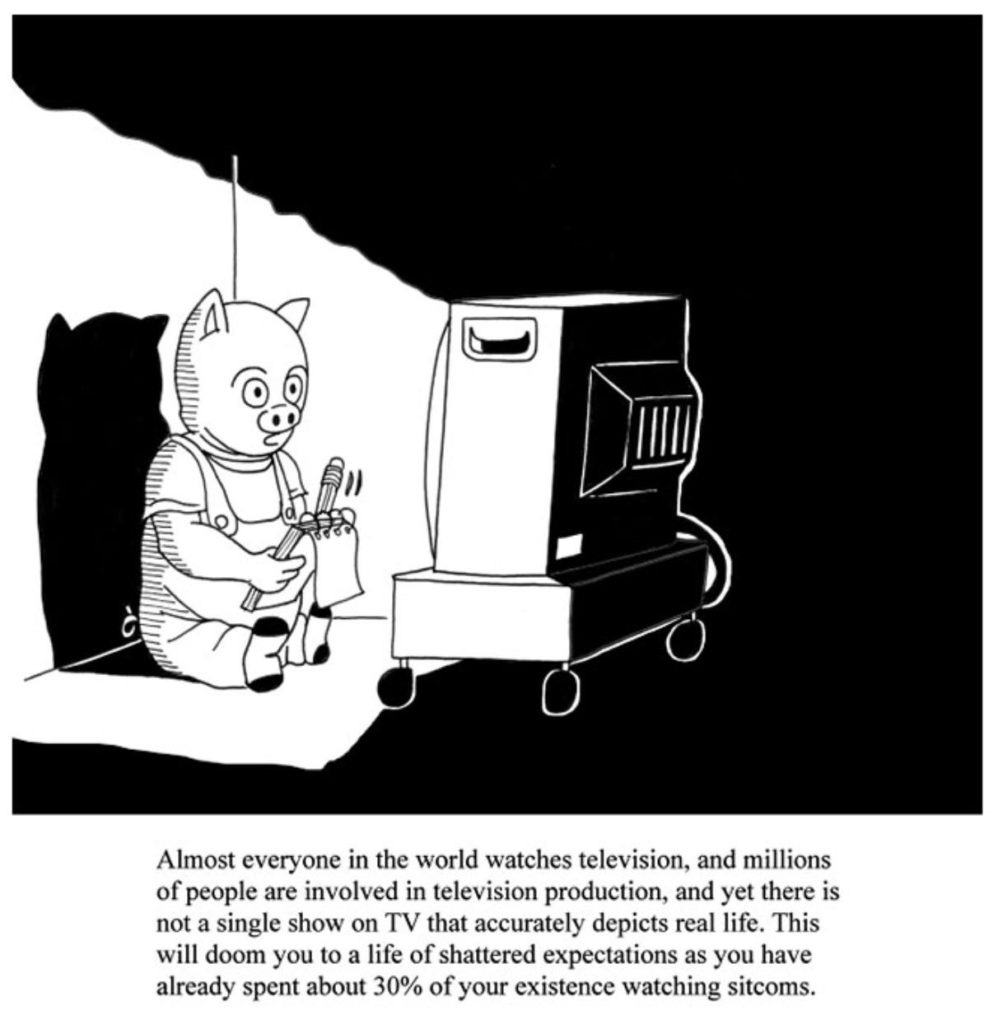


UPDATED 9:04 PM EDT — VIDEO: Russian President URGENTLY Brought to Kremlin 11:00 PM Moscow Time
A motorcade carrying Russian Federation President Vladimir Putin was seen moving swiftly into the Kremlin late Saturday night.
The specific reason for the sudden, late-night move to the Kremlin is described over Intel Channels as “A serious matter requiring Presidential decision.”
Video of the Presidential motorcade arriving at the Kremlin, appears below.
UPDATE 8:19 PM EDT —
Intel circuits saying “Something really serious has happened.”
UPDATE 8:50 PM EDT —
Russian Air Force strategic bomber voice net active 5648 Kilohertz USB and 6552 Kilohertz USB
NOT CERTAIN IF THIS SUDDEN ACTIVITY ON RUSSIAN STRATEGIC BOMBER FREQUENCIES IS RELATED AT ALL TO PUTIN’S RETURN TO KREMLIN. JUST REPORTING IT AS IT IS __IS__ UNUSUAL AT THIS HOUR ON A SATURDAY.
8:53 PM EDT —
CAN NOW CONFIRM RUSSIAN LONG-RANGE STRATEGIC BOMBERS ARE UP IN THE SKIES.
UPDATE 9:04 PM EDT —
Second video emerged of Putin Motorcade “hauling ass” to the Kremlin late Saturday night in Moscow. Moving quite fast, as if an Emergency.
Abandoned Cat Was Antisocial Until A Tiny Kitten Forced Him To Play With Her
A nice cute video
China Just KILLED Mark Zuckerberg’s Metaverse
Big, big, HUGE changes to the world are coming. Here’s just a little tiny taste of what China is doing RIGHT NOW! Jeeze!
Do you want more?
You can find more articles related to this in my latest index; A New Beginning. And in it are elements of the old, some elements regarding the transition, and some elements that look towards the future.
New Beginnings 4.
Articles & Links
Master Index.
- You can start reading the articles by going HERE.
- You can visit the Index Page HERE to explore by article subject.
- You can also ask the author some questions. You can go HERE to find out how to go about this.
- You can find out more about the author HERE.
- If you have concerns or complaints, you can go HERE.
- If you want to make a donation, you can go HERE.
.

